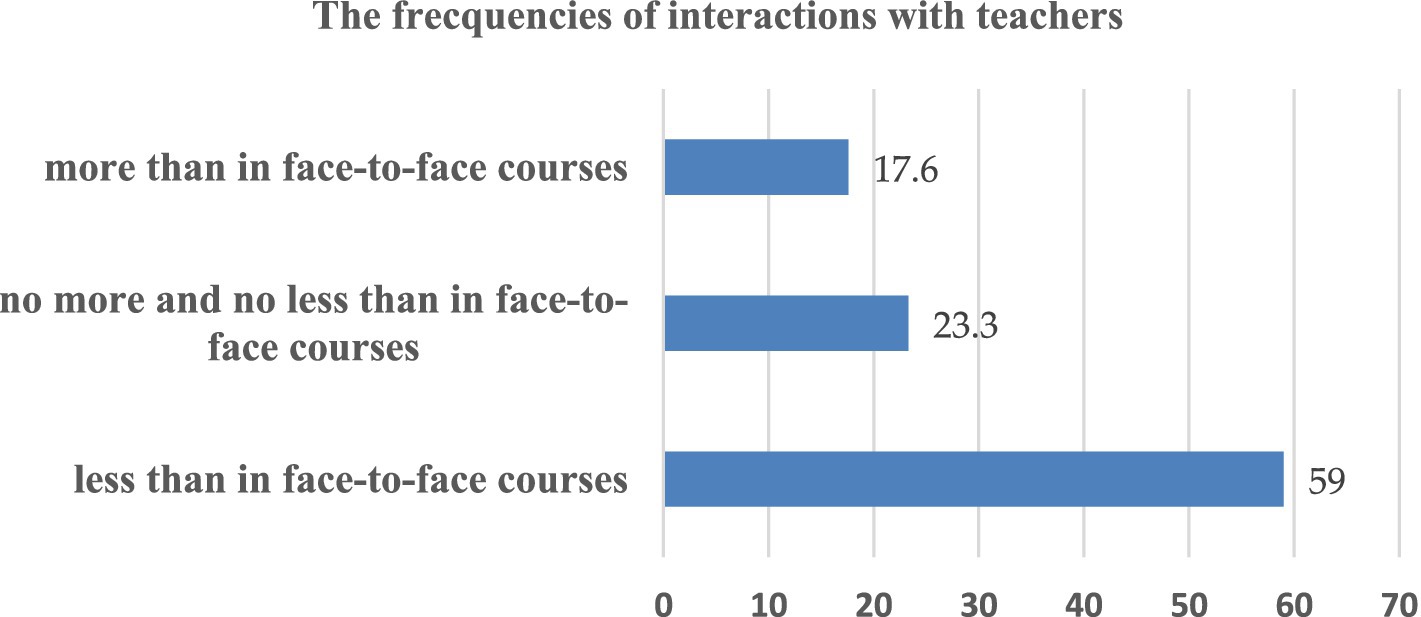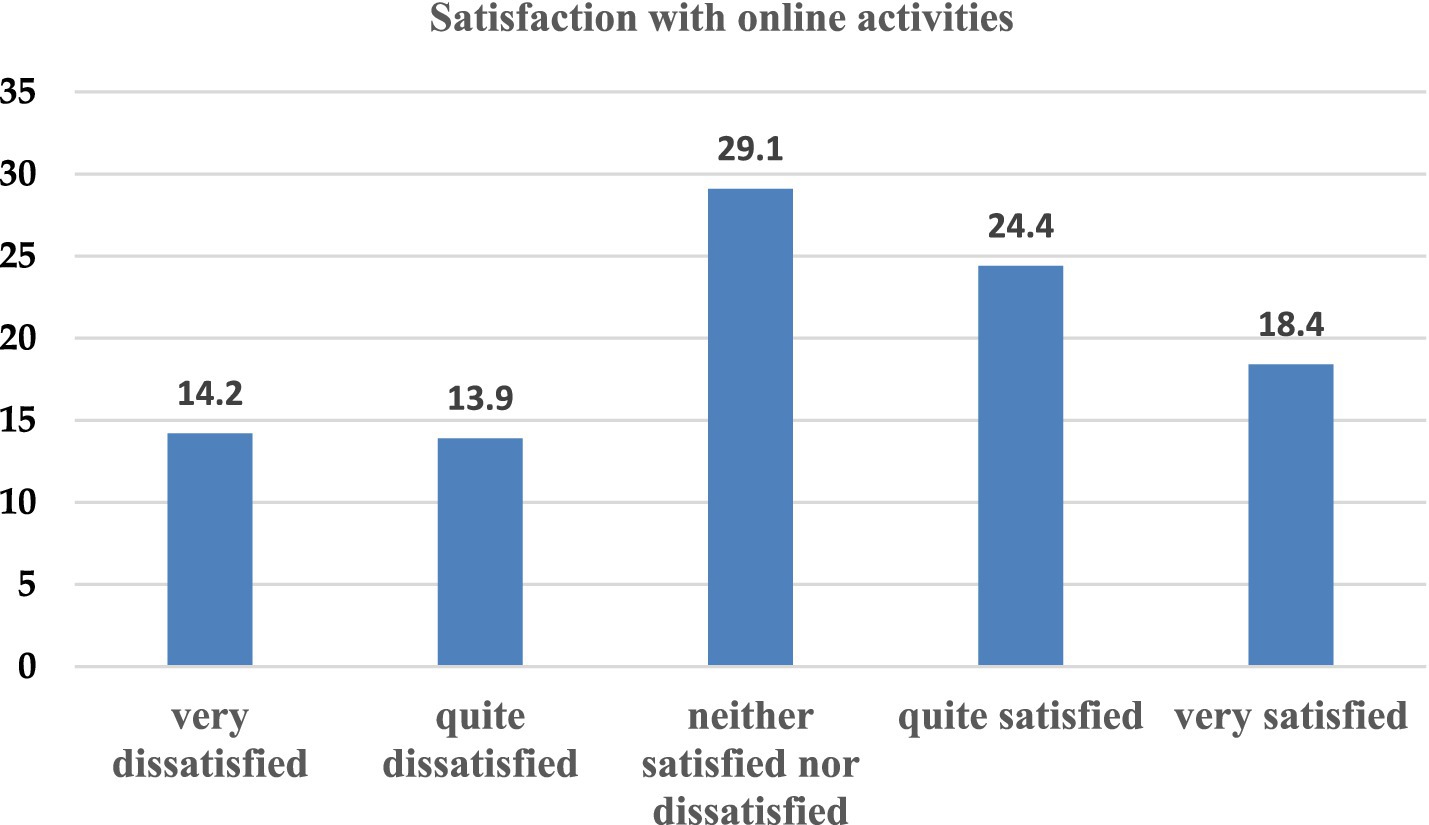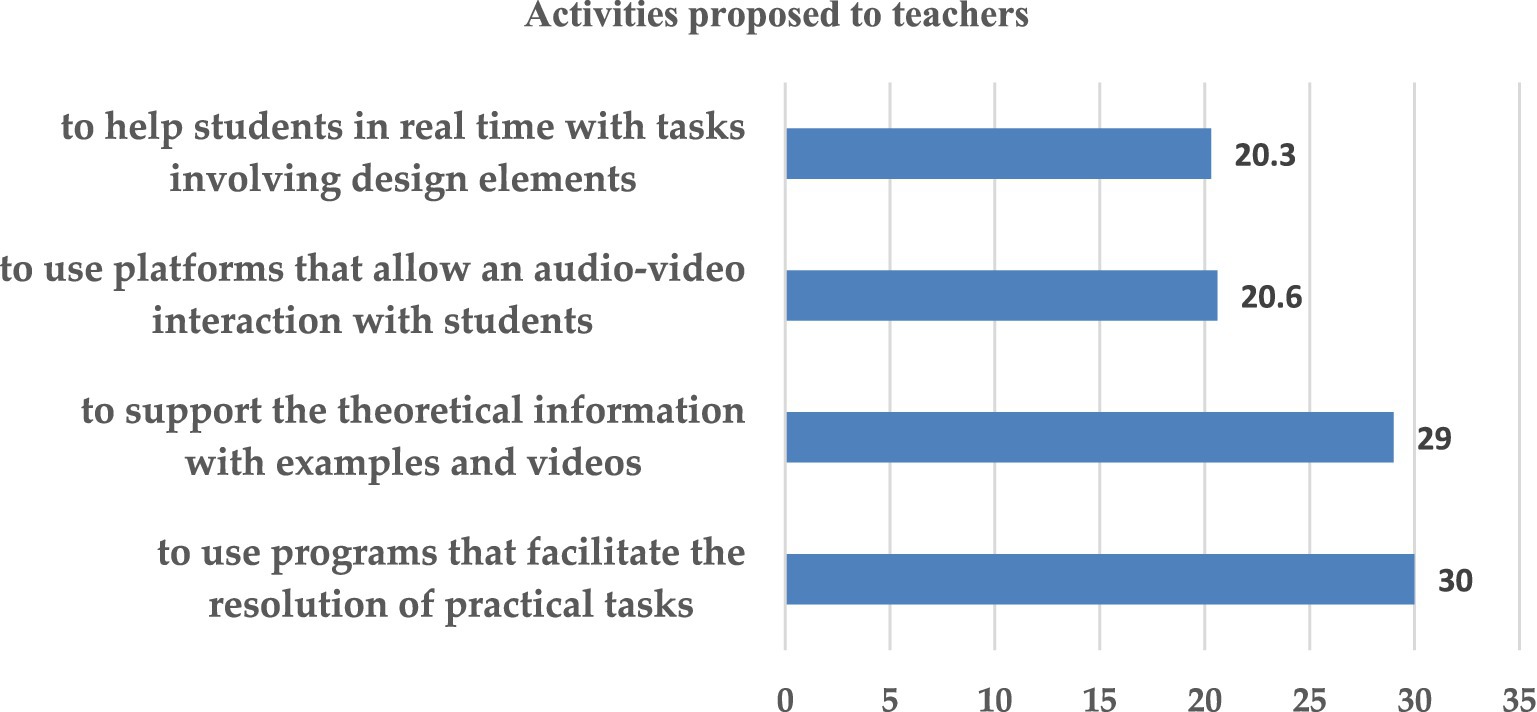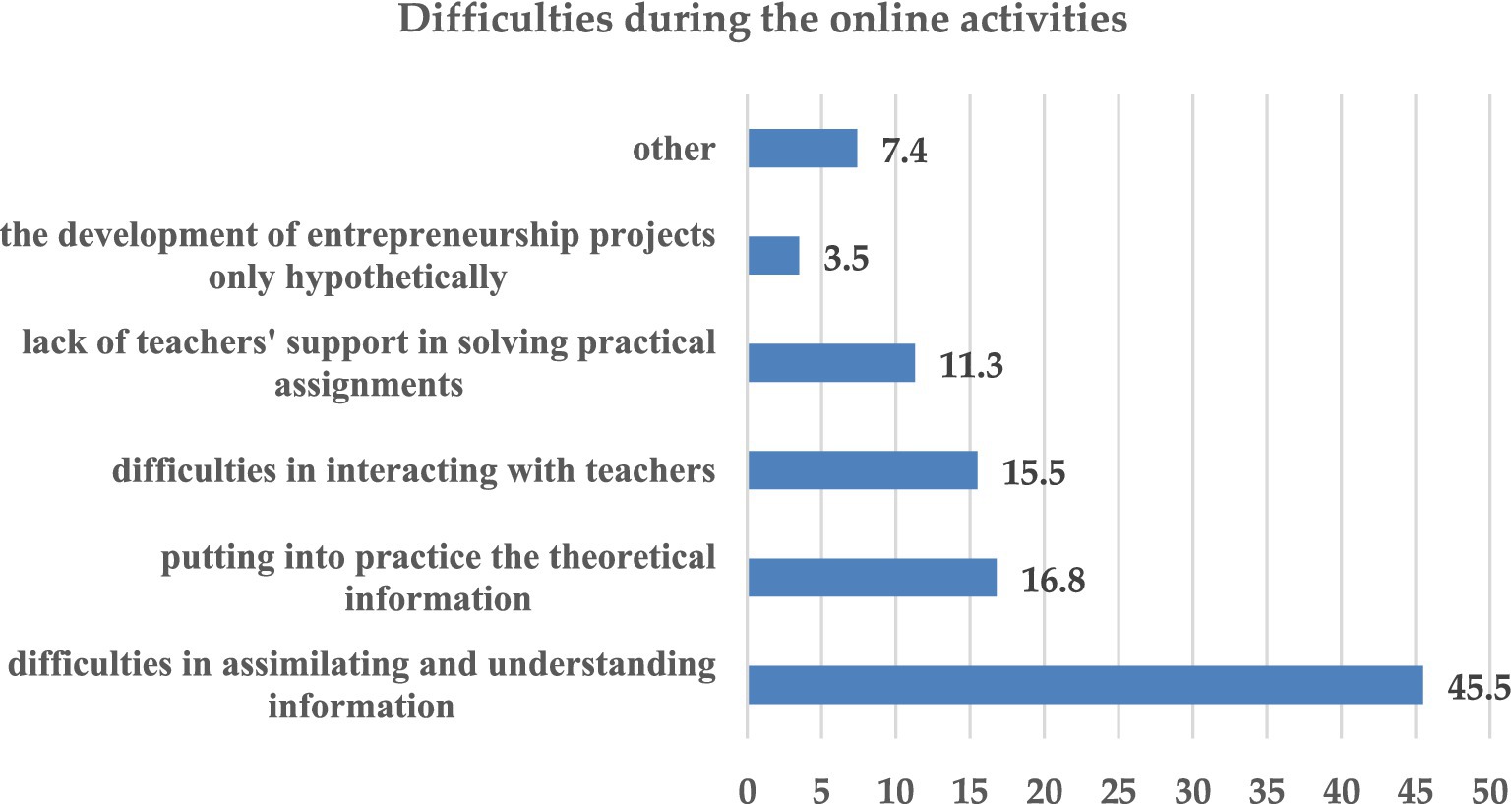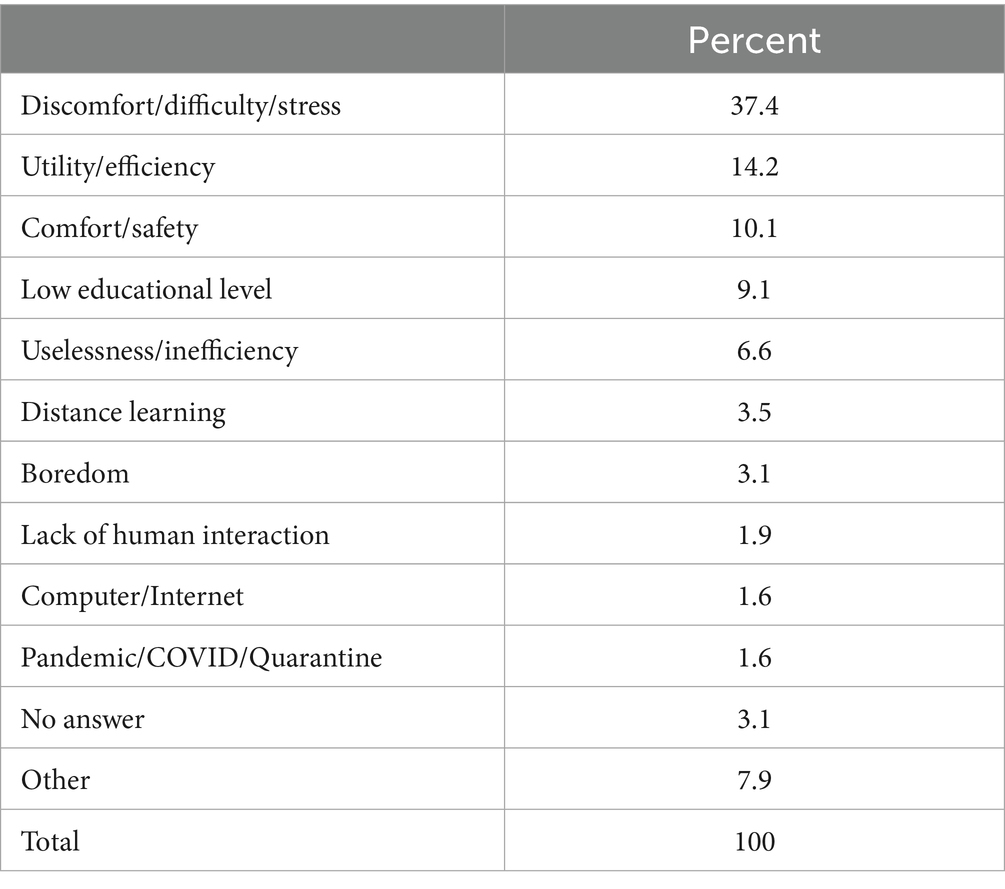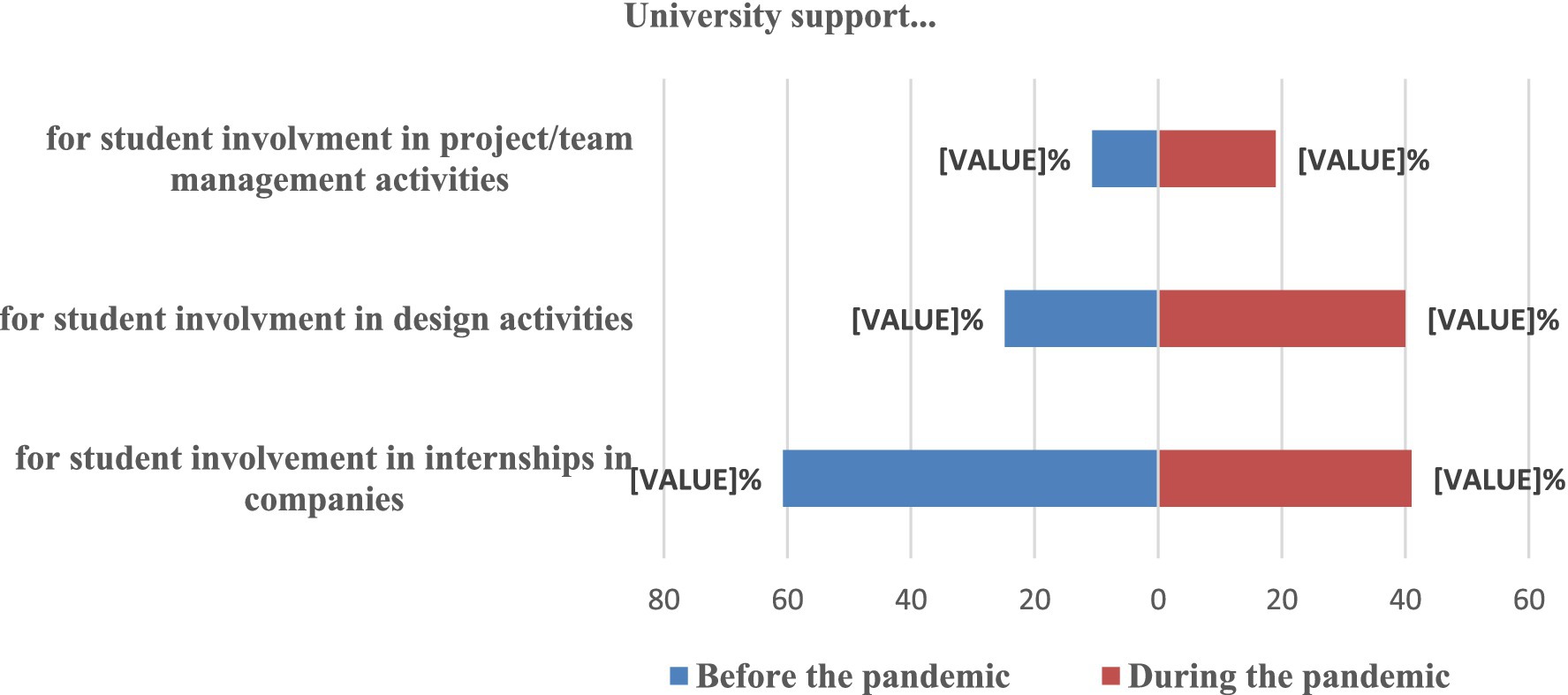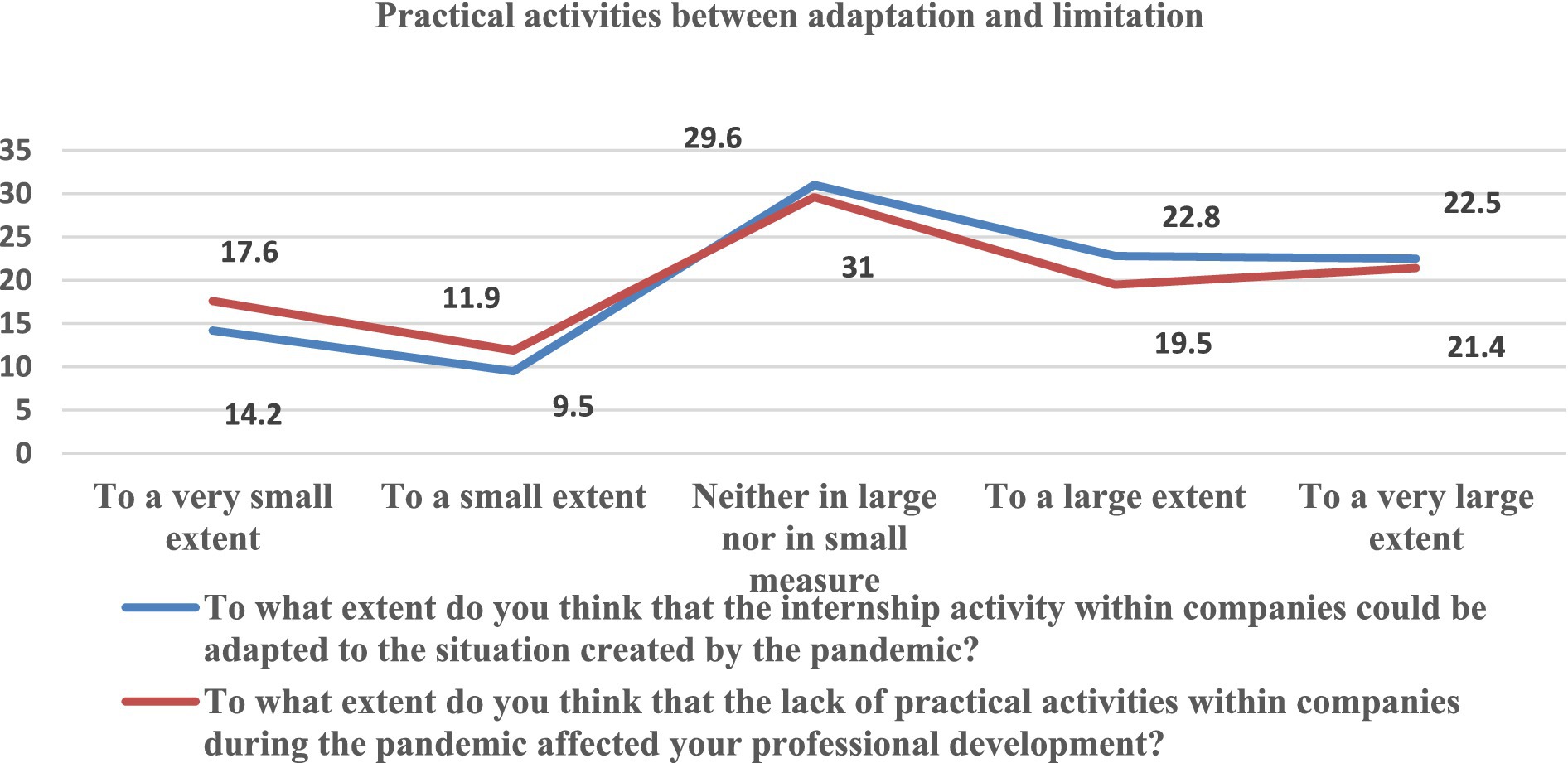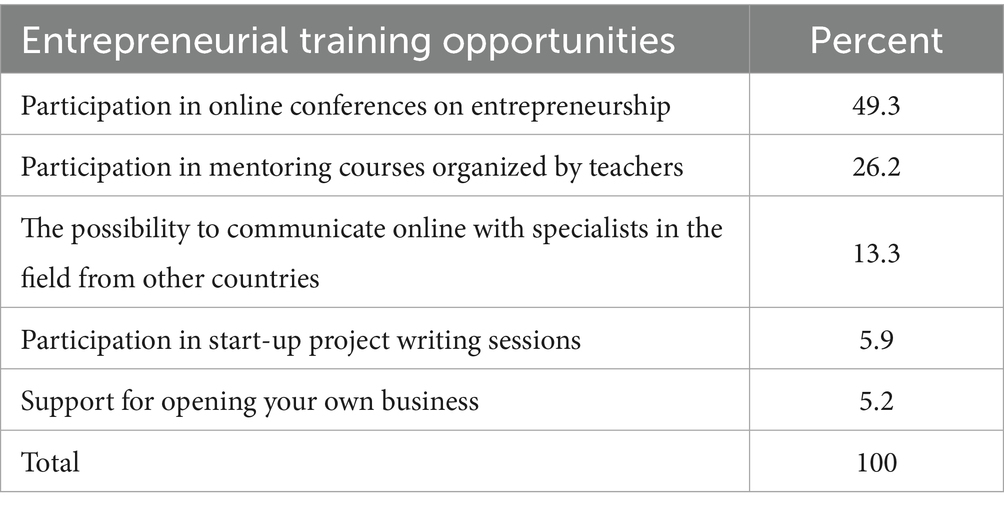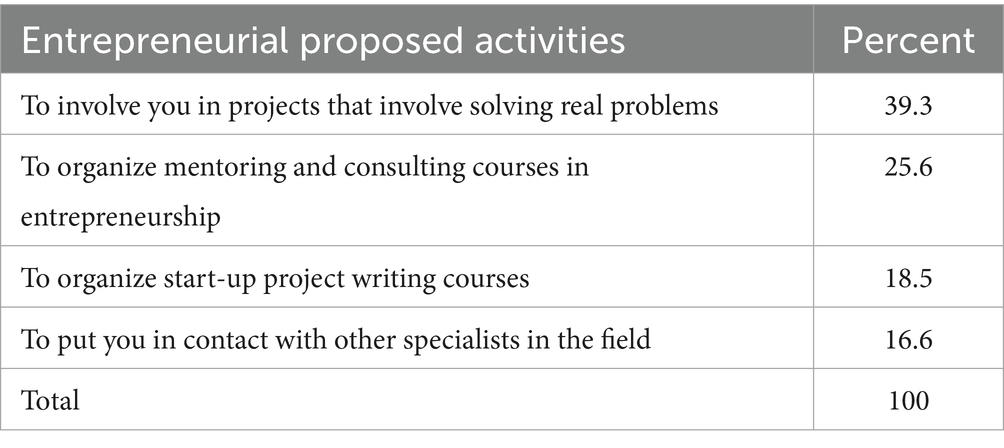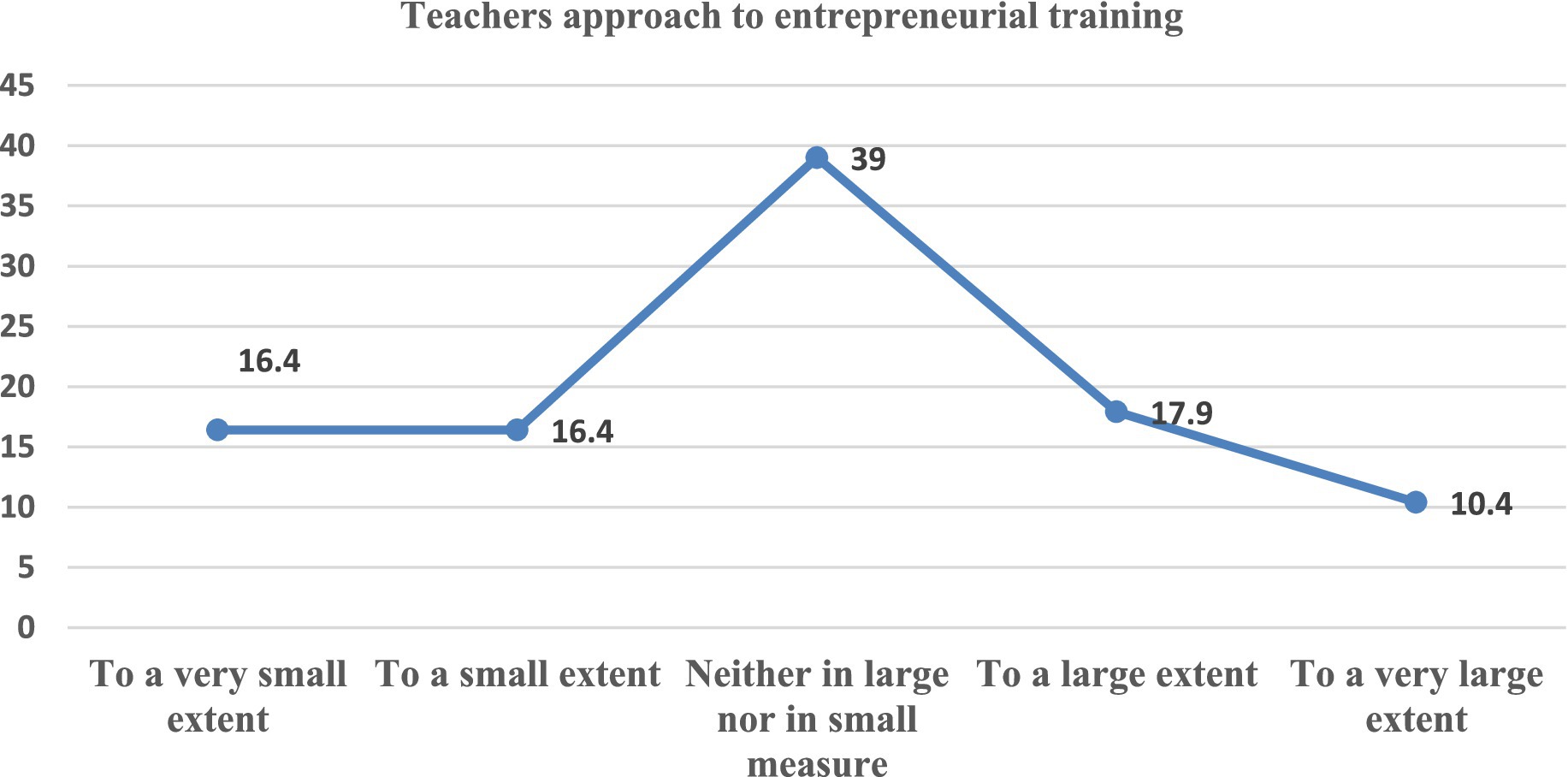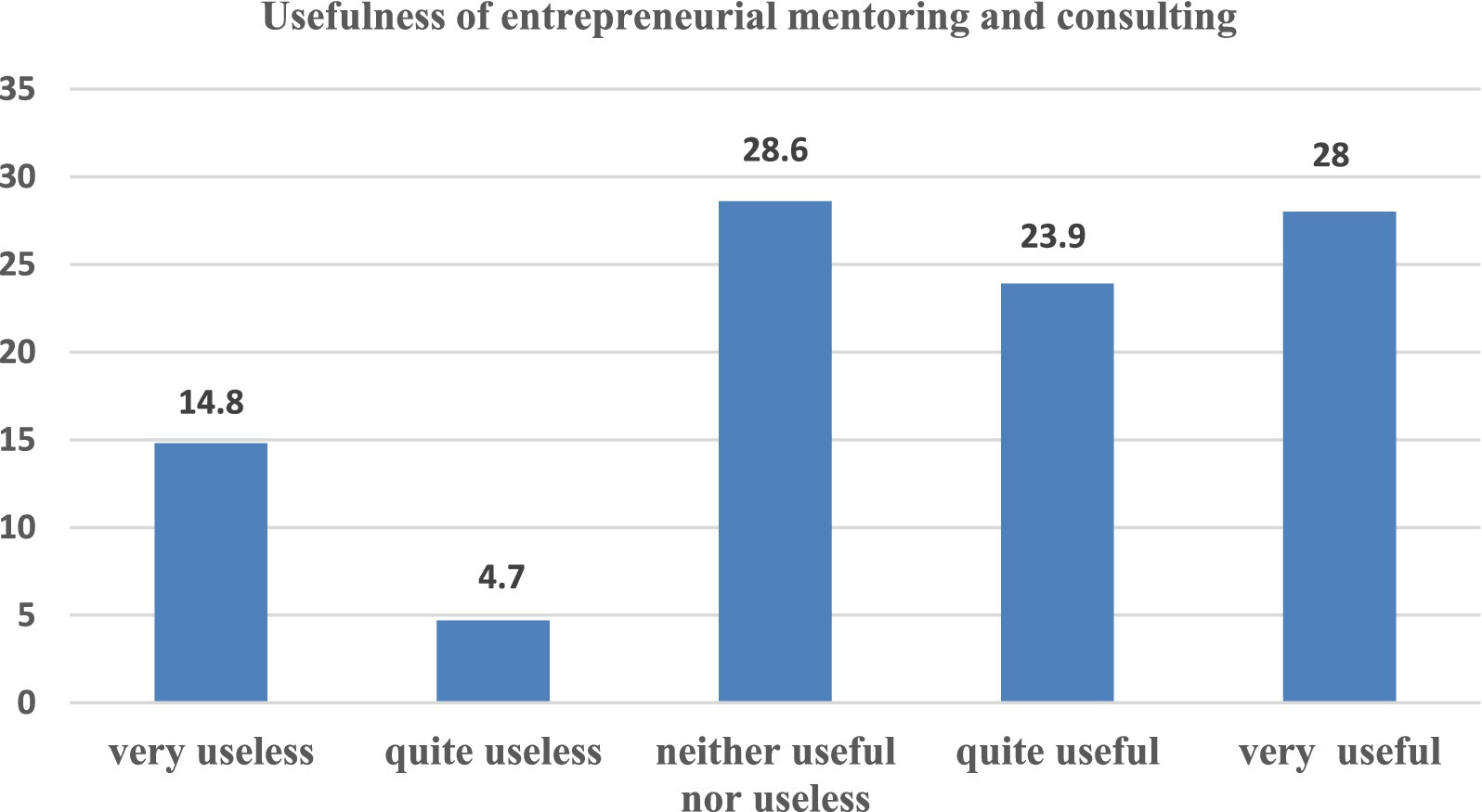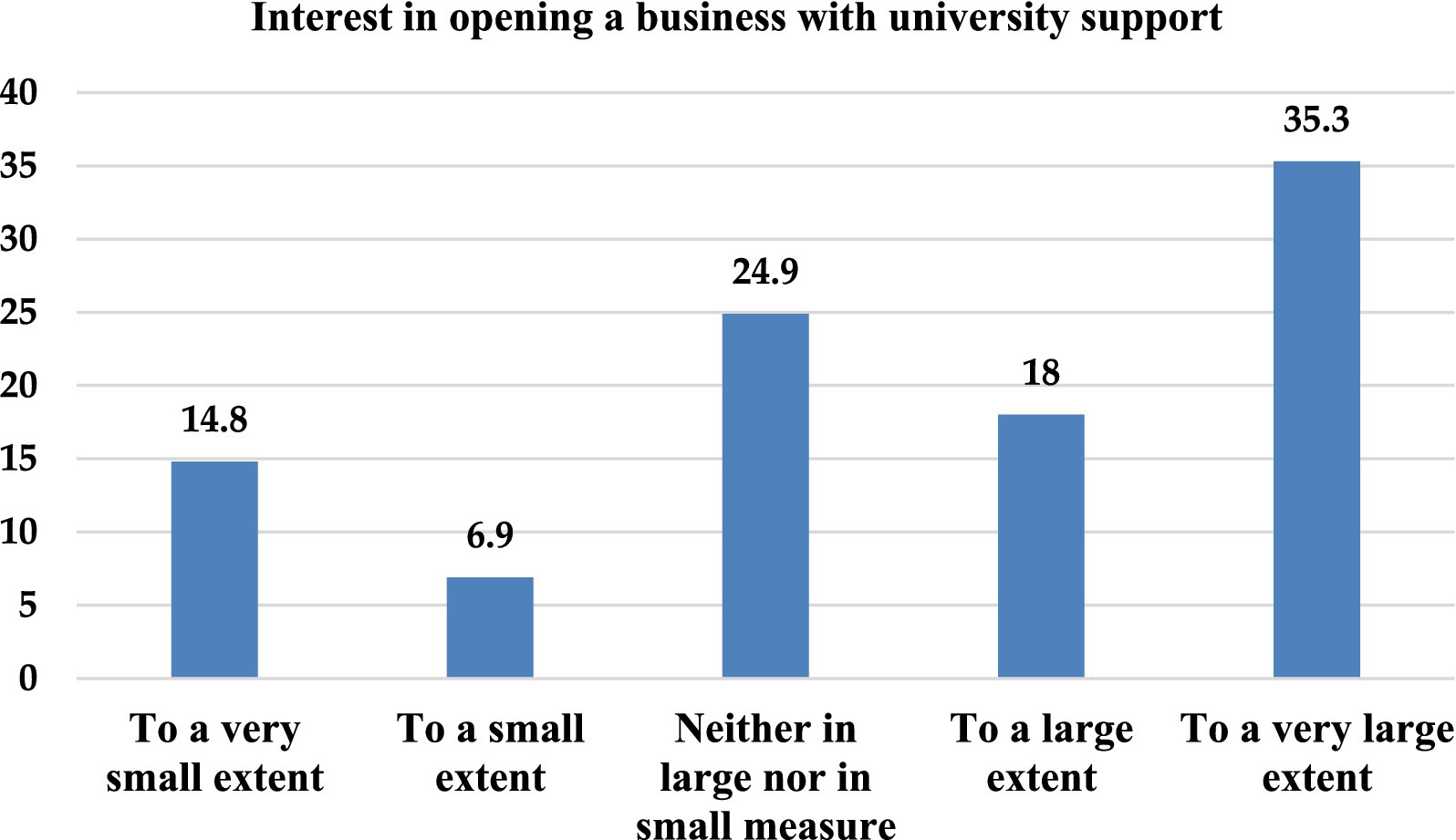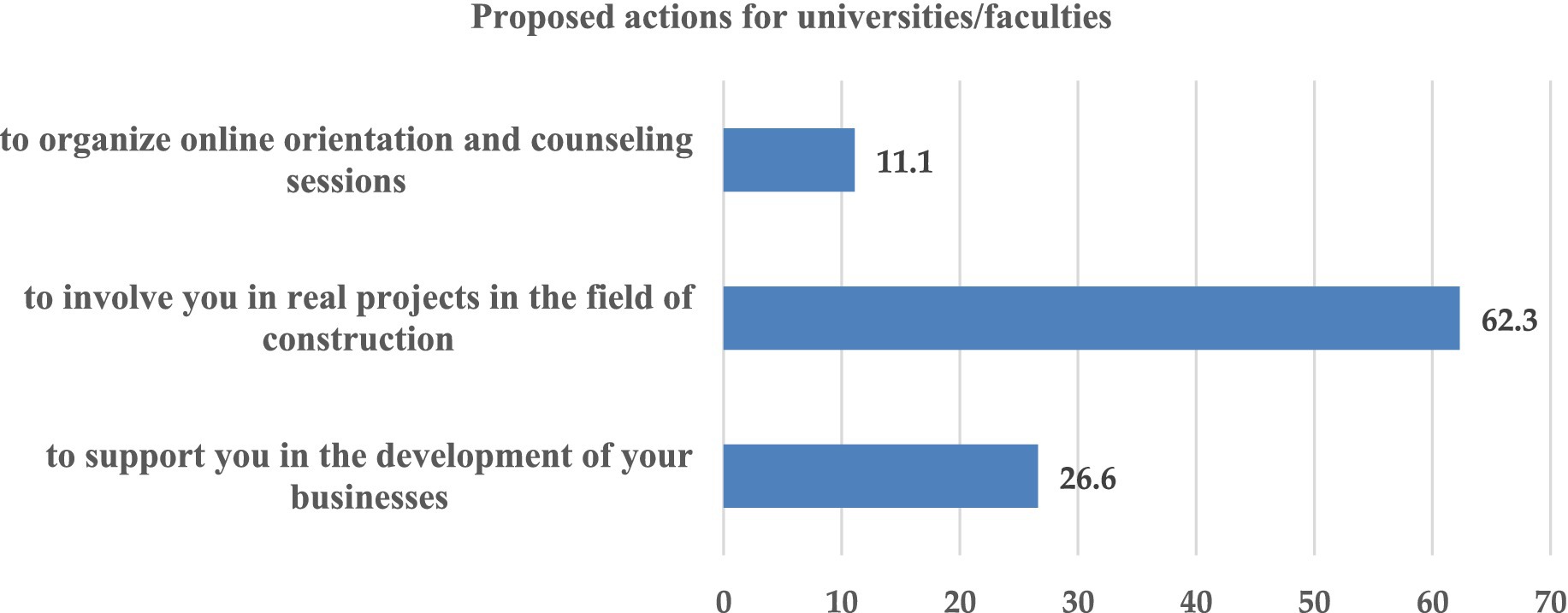- 1Faculty of Educational Sciences, Psychology and Social Work, Babeș-Bolyai University of Cluj-Napoca, Cluj-Napoca, Romania
- 2Faculty of Sociology and Communication, Transilvania University of Brasov, Brașov, Romania
- 3Faculty of Social Sciences, University of Craiova, Craiova, Romania
- 4Faculty of Philosophy and Social-Political Sciences, Alexandru Ioan Cuza University of Iasi, Iasi, Romania
- 5Faculty of Sociology and Communication, Transilvania University of Brasov, Brașov, Romania
- 6Faculty of Educational Sciences, Psychology, and Social Sciences, Aurel Vlaicu University of Arad, Arad, Romania
- 7Faculty of Civil Engineering, Transilvania University of Brasov, Brașov, Romania
- 8Faculty of Law and Administration, Carol I National Defense University of Bucharest, Bucharest, Romania
- 9Faculty of Sociology and Communication, Transilvania University of Brasov, Brașov, Romania
- 10Faculty of Civil Engineering, Transilvania University of Brasov, Brașov, Romania
- 11Faculty of Sociology and Communication, Transilvania University of Brasov, Brașov, Romania
This research analyzes the impact of the COVID-19 pandemic on university education in the field of construction, with a focus on the necessary adaptations and challenges encountered in the entrepreneurial training of students. The study was carried out on a sample of 318 students from the construction specializations of the Transilvania University of Brașov, and aimed to identify the changes induced by the global pandemic in educational activities, with a special focus on entrepreneurship activities. The results of the research suggest that the pandemic has led to a significant transition to online education, with a decrease in direct interaction between students and teachers and an increase in course theorizing. Also, the difficulties encountered by students in developing entrepreneurial skills were influenced by the availability of educational resources and the support provided by the university. The study also confirms the importance of online activities, such as conferences and mentoring courses in the field of entrepreneurship, as effective forms of support during the pandemic. Finally, the research proposes suggestions for improving entrepreneurial training within construction education, taking into account the needs and preferences expressed by students.
1 Introduction
The COVID-19 pandemic has caused one of the greatest disruptions in the history of education, profoundly affecting higher education globally. In the first months of the health crisis, universities around the world closed their campuses and moved courses online ad hoc in an effort to comply with social distancing restrictions (Marinoni et al., 2020). This sudden transition to emergency digital teaching has disrupted the traditional face-to-face system and forced institutions to quickly identify alternative ways of delivering education (Marquez-Ramos, 2021). Despite all the initial challenges, teachers and students have gradually adapted to the “new normal,” and online learning has become an essential component of the university educational process (Marquez-Ramos, 2021).
However, the literature highlights numerous difficulties encountered during this transition period. In the early stages, the focus was more on ensuring the continuity of courses than on the quality and efficiency of online teaching, the implementation often being done without adequate pedagogical planning. Thus, the potential of the digital format has not been fully exploited, with the risk of reinforcing the perception that e-learning is only an inferior alternative to traditional education (Bolliger and Halupa, 2018). Also, the absence of direct face-to-face interaction has made it difficult to assess students’ needs and provide the necessary educational support (Bolliger and Halupa, 2018). One of the major challenges for teachers has been maintaining students’ engagement and interest in the online environment, in the absence of the benefit of personal interactions (Bolliger and Halupa, 2018). These initial difficulties underline the reactive and improvised nature of the educational response to the pandemic, in the context of an unprecedented event.
The impact was felt even more acutely in fields of a pronounced practical nature, such as construction engineering. Many engineering degree programs are based on applied activities (laboratories, workshop projects, on-site practice) that are difficult to fully replicate online. Studies indicate that practical segments of courses were the most difficult to implement remotely during this period (Jones et al., 2021; Laachach et al., 2023). In Romania, the forced transition to online education was carried out urgently, without sufficient prior training, which led to varied approaches from one university to another and to an uneven level of quality of the educational act (Alexa et al., 2022). Alianța Națională a Organizațiilor Studențești din România – ANOSR (2020) stressed that, although the move of courses to the virtual environment allowed the learning process to continue, “online teaching cannot fully replace the face-to-face teaching experience,” certain disciplines—especially those with a significant practical component in the field of engineering and medical sciences—being particularly difficult to transfer online. Therefore, students from technical specializations have fully felt the reduction of direct interactions with teachers and the limitation of practical activities, aspects that can affect the quality of professional skills training.
A specific aspect of interest is the formation of entrepreneurial skills among students in the field of construction, in the context of the pandemic. Entrepreneurship education is recognized as a crucial component of preparing students for the modern labor market, stimulating innovation and the ability to start their own businesses even in difficult socio-economic conditions. Traditionally, this training is carried out through experiential methods and direct interactions (e.g., startup projects, workshops, mentorship), elements made more difficult by pandemic restrictions. Recent research points to the negative effects of the pandemic on entrepreneurial teaching—for example, reduced opportunities for hands-on learning and mentoring—and the need to rethink it in an online format (Laachach et al., 2023). However, the importance of entrepreneurial skills has not diminished; On the contrary, the crisis context has highlighted their role in increasing the resilience of graduates. In Romania, technical universities have consolidated in recent years their efforts to support entrepreneurial education by establishing Student Entrepreneurial Societies (SAS), meant to promote entrepreneurship and provide support to those who want to start business initiatives from the faculty benches. These steps underline the recognition, at the institutional level, that future construction engineers need not only technical knowledge, but also entrepreneurial skills to be able to adapt and innovate in a post-pandemic economic environment.
Considering these considerations, there is a need for an investigation dedicated to the impact of the COVID-19 pandemic on university education in the field of construction, with a focus on the dimension of entrepreneurial training of students. Placing the problem both in a global context and in the specific context of Romania, the present study aims to identify how students felt and managed the changes in the educational process during the pandemic, as well as the extent to which their entrepreneurial preparation was affected or adapted. This research is important to highlight the lessons learned and the remaining challenges—information that can guide universities in developing strategies and best practices aimed at improving the resilience of the education system and ensuring the training of graduates capable of coping with both the professional demands of the construction field and an ever-changing economic environment. Finally, the results will substantiate the specific objectives of the study, oriented towards optimizing the academic and entrepreneurial training of students in crisis and post-crisis conditions.
2 Literature review
The COVID-19 pandemic has triggered a sudden transition from traditional face-to-face teaching to online education in universities globally. In the first months of 2020, campuses closed and courses moved to digital platforms, often without prior training, both abroad and in Romania. The literature highlights that this rapid change has seriously disrupted the conventional educational process and has forced institutions and teachers to find innovative solutions to ensure academic continuity. For example, Marinoni et al. (2020) shows in an IAU global report that almost all universities have had to implement “emergency distance learning” to protect public health, facing unprecedented logistical and pedagogical challenges. Similarly, Adedoyin and Soykan (2020) point out that this crisis has highlighted both major challenges—such as lack of staff training, digital skills shortages and the digital divide among students—and opportunities for educational innovation (e.g., the widespread adoption of online platforms) in higher education.
International studies have reported that the transition to online has had mixed effects on the student experience. On the one hand, global surveys (Aristovnik et al., 2020) indicate that many students experienced an increase in workload and difficulty concentrating in the new environment. A study of >30,000 students from 62 countries showed that 42.6% of students reported a higher volume of homework and assignments, and most perceived a decrease in their academic performance with the suspension of face-to-face classes. Also, isolation at home has led to self-motivation problems and increased stress and anxiety levels, especially among undergraduate students. On the other hand, however, research also shows the academic community’s ability to adapt: despite initial difficulties, teachers and students have in many cases managed to adapt to the new digital normal, and online learning has become an essential component of higher education during the pandemic. For example, a German study (Grodotzki et al., 2021) conducted at a mechanical engineering faculty found that both teachers and students overcame the initial shock and adapted relatively quickly to online teaching, developing effective routines. By adopting practices such as the flipped classroom model—with pre-recorded lessons, interactive Q&A sessions and self-assessment tests—it has been possible to maintain student engagement at a satisfactory level. Thus, the general literature suggests that, although the pandemic has severely disrupted university education, it has also stimulated pedagogical innovation and institutional resilience, paving the way for new hybrid methods in the future.
Technical and engineering education, especially in the field of construction, has been among the most affected by the online transition, due to its pronounced applicative nature. Many engineering degree programs are based on applied activities (laboratories, workshop projects, on-site practice) that are difficult to fully replicate online. Studies show that it is precisely these practical components that have been difficult to recreate in the virtual environment. Shoulder et al. (2022) notes that with the move of courses to the internet, teachers have had to drastically reduce practical laboratory activities and experimental work, while adjusting team projects and active learning methods. This decrease in practical opportunities has been accompanied by the loss of direct interaction between students and teachers or between colleagues. According to the same authors, in the absence of access to equipped laboratories and face-to-face contact, negative consequences can arise on the transfer of knowledge and skills: there is a risk of decreasing the quality of learning outcomes, gaps in the formation of technical skills and even affecting the professional training of future engineers.
Numerous studies have pointed to the problem of online laboratories in engineering disciplines. A specific challenge of online engineering education is offering laboratory experiences comparable to traditional ones. Grodotzki et al. (2021) emphasize this aspect and review possible solutions identified in the literature: virtual laboratories (software simulations of experiments), remote laboratories (remote control of real physical equipment) or even live digital labs, in which the teacher transmits experimental demonstrations in real time. While none of these solutions perfectly replicate the hands-on experience, they can alleviate the practice deficit by allowing construction and engineering students to observe phenomena, analyze experimental data, and interact (virtually) with equipment. The contribution of these innovations is important: the literature has started to provide best practice guides for designing online engineering courses, so that they include practical components as interactive and effective as possible.
At the same time, technical universities have often resorted to hybrid formats during the pandemic, where restrictions have allowed. For example, in Romania, some engineering faculties (including in the field of construction) adopted scenarios in which theoretical courses were held online, and essential laboratories, with a small number of students, took place face-to-face when the epidemiological situation was favorable. This hybrid model has tried to maintain the applicative character of technical programs, compensating, at least partially, for the shortcomings of exclusively online learning. The rector of the Polytechnic University of Timișoara noted that technical education, “given its applicative specificity,” suffered the most during the pandemic; Even if remedial measures were taken (virtual platforms, remedial practical sessions), the face-to-face return was considered essential for the quality of training. This finding is in line with the international literature: the training of construction engineers depends to a large extent on practical learning (material strength laboratories, on-site practice, collaborative structural design projects, etc.), elements that are difficult to move entirely online. Thus, a gap highlighted by the pandemic is the absence of truly equivalent digital methods for experiential learning in technical fields; Many studies call for further investment and research in the development of advanced virtual environments (e.g., virtual or augmented reality) that allow realistic simulation of experiments and constructions, in order to better prepare for such crisis situations in the future.
Student academic engagement—defined by active participation, interaction and motivation—has been another central topic in the literature of the pandemic. Numerous researches, including from Romania, have investigated the extent to which students have remained involved and interested in courses once they moved online. Lup and Mitrea (2021) conducted a study on Romanian students, finding the emergence of disparities in academic engagement during emergency online learning. They show that the sudden shift to online classes generated different levels of participation and engagement, influenced by factors such as students’ home conditions: those without an adequate private study space, without a stable internet connection, or burdened by household chores (family care, for example) experienced a significant decline in involvement in academic activities. Thus, the pandemic has accentuated existing inequities—students from disadvantaged backgrounds have faced increased difficulties in actively participating in classes and focusing on their studies. Similar results also appear in international surveys: for example, students in Africa or Asia, where the digital infrastructure is weaker, reported lower levels of satisfaction with online academic support and more technical obstacles, compared to their peers in Europe or North America.
Another aspect related to engagement is social interaction and support. In the absence of daily physical interaction, students have depended on virtual communication. However, the global study by Aristovnik et al. (2020) notes a positive aspect: more than half of the students (57.6%) said they were satisfied with the support provided by teachers online, with teachers managing in many cases to be receptive and provide assistance even remotely. This suggests that teachers’ efforts to keep in touch with students (through online counselling sessions, regular feedback, messaging on e-learning platforms) have helped to maintain a certain level of engagement. However, the literature frequently points out that maintaining students’ attention and interest in an online course is difficult. Factors such as the monotony of the virtual format, “Zoom fatigue,” and the lack of direct interaction have led to a decrease in the active participation of many students. Some qualitative studies have reported the phenomenon of disconnection—students logging into the course but not engaging (e.g., not answering questions, not turning on the webcam, etc.), which affects both the learning process and their well-being. Thus, the need for new pedagogical strategies for the online environment is outlined: from training teachers in the use of interactive platforms, to the adoption of student-centered teaching methods (project-based learning, virtual group discussions, live surveys during the course) aimed at increasing student participation.
An example of good practice is provided by Gutierrez et al. (2023), who studied an educational program in which engineering students taught STEM concepts to younger students, before and during the pandemic. When the program had to move online, students and mentors were forced to adapt their practical lessons to a virtual format. According to the results, although transforming hands-on lessons into online modules was a significant challenge (involving the production of multimedia content, video demonstrations, etc.), students reported that they developed new skills (use of educational technologies, distance teaching techniques) and that, overall, they maintained their learning progress. Interestingly, the completely online transition was perceived as effective for their learning: the engineering students involved continued to assimilate specialized knowledge and even showed positive affective reactions, feeling pride in the digital skills acquired. This example suggests that, if well designed, online learning activities can maintain or even increase engagement, especially when students see practical relevance and the opportunity to acquire useful skills in their professional future (such as virtual teamwork skills, highly valued in the post-pandemic context).
Also, the mental health of students has become a concern associated with academic engagement. Studies from the pandemic period often mention increased anxiety, feelings of loneliness, and digital burnout in students, which negatively influences class attendance and performance. Stressors include general uncertainty, financial or family health difficulties, and fatigue accumulated in front of screens. As a result, universities have had to pay attention to supporting students beyond the strictly academic aspect—for example, through online psychological counseling, wellness programs or increased flexibility in assessment. The literature thus highlights the importance of empathy and communication: teachers who showed understanding of the students’ situation (e.g., by extending deadlines, periodically checking their condition) contributed to maintaining a connection that stimulates student engagement even in difficult conditions. These findings underscore that student engagement in the online environment depends not only on technology or method, but also on the human side of teaching—something that future educational research and practices must insist on.
Entrepreneurship education—which aims to develop business initiation and management skills, innovative thinking and entrepreneurship—has also faced major adjustments during the pandemic. Traditionally, entrepreneurship courses emphasize hands-on learning through real projects, experiential activities (business simulations, pitch competitions, student incubators), and extensive interactions with industry mentors. The restrictions imposed by COVID-19 have severely limited the possibility of carrying out these experiential components in physical format, forcing universities to reimagine the way they teach entrepreneurship. Recent studies further enrich this perspective by examining how digital learning environments shape entrepreneurial competencies and engagement. Hendrick et al. (2023) emphasized the importance of contextualized learning in virtual settings, while Deepthi and Exley (2023) underlined student-centered strategies in hybrid models. Li and Liang (2024) contributed with evidence on the integration of entrepreneurial thinking in online higher education platforms.
A first wave of papers published as early as 2020 (e.g., Liguori and Winkler, 2020) discussed precisely the impact of the pandemic on entrepreneurial education and called for it to be rethought in the new context. This pioneering work underlined that going online can be seen not only as a challenge, but also as an opportunity to expand access and introduce digital tools into entrepreneurial training. For example, virtual hackathons and remote business idea competitions have allowed students from various regions to participate, thus diversifying perspectives and teams. However, in the short term, entrepreneurship teaching has suffered from a lack of personal interaction and the difficulty of replicating action-based learning online. Ghannad and Sørensson (2024) examined the transformations of entrepreneurship education during this period, using action research at a European university.
They compared three time stages—before the pandemic, during forced online teaching and after the return to physical classes—for a practical entrepreneurship course. Their findings are revealing: the pandemic forced the extension of the duration of the courses (to accommodate the new format), but the study showed that the extension of the training time does not guarantee better entrepreneurial results. On the contrary, a condensed and intensive approach (such as entrepreneurial bootcamps held over shorter and more concentrated durations) has stimulated more innovation and improved the entrepreneurial mindset of students. In other words, the entrepreneurship courses reorganized in a compact format, even online, managed to keep students engaged and focused on the development of business ideas.
An unexpected outcome of online teaching in the field of entrepreneurship was the increase in learner diversity. The hybrid model, introduced during the pandemic, enabled the participation of students with varied backgrounds — including those who might not have been able to attend in person, such as international students or individuals working alongside their studies. Ghannad & Sørensson notes that this diversification of class demographics—culturally, experientially and insightfully—has enriched discussions and collaboration among students, leading to more creative and well-grounded entrepreneurial projects. Thus, one of the contributions of the literature on the topic of entrepreneurial education in the pandemic is to highlight the unexpected benefits of online teaching: expanded access and greater inclusivity. At the same time, these studies suggest that educators should capitalize on group diversity (by encouraging the exchange of ideas between students with varied backgrounds) to improve the entrepreneurial learning process.
On the other hand, researchers also draw attention to specific limits and problems. A major obstacle was the implementation of the practical segments of entrepreneurship courses in the virtual environment. Laachach et al. (2023), cited by Ghannad & Sørensson, report “negative effects on entrepreneurial teaching” when hands-on components (such as projects to actually create a prototype or internships in startups) have been cancelled or brought online. Maintaining student engagement has been difficult, similar to the situation in other disciplines, as entrepreneurship courses based on face-to-face interaction, collective brainstorming and informal networking have lost their momentum online.
Jones et al. (2021) also noted that the lack of learning opportunities through direct experience somewhat diminished the development of practical skills (such as negotiation, pitching to investors, team leadership) in student entrepreneurs in 2020–2021. However, educators have adapted: they have used digital tools (business simulations, serious online games, collaboration platforms such as Miro or Slack) to offer students experiences as close to reality as possible. Some authors even report emerging new teaching approaches, such as virtual mentoring with invited industry entrepreneurs, who during lockdown periods have become more available to participate in remote classes (Ratten, 2020).
Importantly, recent literature is also beginning to discuss the post-pandemic impact on entrepreneurial education. A synthesis study (Mathew et al., 2022) suggests that many of the practices adopted out of necessity (e.g., hybrid courses, virtual incubators) will continue after the pandemic, reshaping the entrepreneurial curriculum. Ghannad and Sørensson (2024) recommend, in their conclusions, that future research investigate the motivations of different groups of students attending online entrepreneurship courses (e.g., differences between younger students vs. returning professionals) and the long-term effects of new teaching strategies on their actual entrepreneurial journey.
In addition, it highlights the need to study the results on a practical level: how many students actually launch their start-ups after graduation and whether the online/hybrid training has positively or negatively influenced this result. These future research directions are essential to understand whether the adjustments made during the COVID period were circumstantial in nature or whether they can lead to permanent innovations in the way we learn entrepreneurship.
The contributions of the existing literature on the impact of the COVID-19 pandemic on university education (especially in engineering and entrepreneurship) are significant. First, research has systematically documented the challenges encountered: from limitations in practical education (labs and application projects cancelled or migrated online), to declining student engagement and access equity issues (e.g., the digital divide highlighted by Butnaru et al., 2021, related to unequal access to technology). This documentation has made it possible to raise awareness of the vulnerable points of the university education system in the face of a crisis of such magnitude. Secondly, the literature has contributed with positive case studies and pedagogical innovations: for example, the implementation of the flipped classroom in online engineering teaching has proven beneficial for learning, and the use of collaborative virtual platforms in entrepreneurial projects has maintained creativity and interactivity. Guidelines and recommendations (based on research) have been published on online course design, the balance between synchronous and asynchronous, remote assessment and student support, which remain valuable resources for future practices.
Last but not least, international comparative studies (including those that included Romania) provided a global perspective, highlighting both common elements (e.g., the difficulty of online laboratories is reported all over the world) and local particularities (e.g., cultural differences in adapting to online, different capacity of institutions to manage the crisis).
Despite these contributions, there are still gaps in the literature that provide opportunities for future research. One of the gaps stems from the relatively short and reactive nature of many studies: most research has focused on the immediate perceptions of students and teachers or on ad-hoc solutions applied during the crisis. Less work has addressed the long-term impact. For example, we do not yet have enough data on the lasting effects of the 2 years of online education on the practical skills of engineering students (have those practical gaps been fully recovered after returning to campus?) or on the career trajectory of graduates. Longitudinal studies are needed to follow generations of students affected by the pandemic in their early career years, to see if and where gaps in knowledge or skills arise. Another gap is the systematic evaluation of the effectiveness of the new tools introduced: for example, virtual labs and simulations have been widely used, but how well do they replace real hands-on learning? A few isolated studies have evaluated them (Grodotzki et al., 2021 provided positive user feedback for certain types of virtual labs), but there is still no consensus on best practices or the limitations of these technologies. Similarly, in entrepreneurship education, various online methodologies have been tried, but the rigorous comparison of the effectiveness of one approach versus another (e.g., online vs. offline entrepreneurial project) remains insufficiently explored.
The literature has clearly highlighted the importance of human and contextual factors (e.g., teacher support, students’ family situation) in the success of online education, but future educational policies need to take more into account these aspects. For example, Lup and Mitrea (2021) suggests that universities and policymakers should develop strategies to reduce engagement disparities online, providing additional resources (equipment, connection) and support for vulnerable students. This is a practical course of action derived directly from academic findings.
The future directions of research are therefore moving in several planes. One is the pedagogical and technological plan: the development and testing of optimal hybrid methods for engineering and entrepreneurial education. Many voices propose a flexible hybrid education model, which combines face-to-face advantages (for practical activities, socialization, direct mentoring) with online advantages (accessibility, digital resources, remote collaboration). Future research can experiment with different proportions of hybridization and emerging technologies (virtual reality for simulating construction labs, cloud-based distributed project platforms for mixed teams of students, etc.) and measure the impact on learning outcomes. Another level is psychological and organizational: understanding how such crises affect the well-being of students and teachers in the long term and how to build resilience. Future studies should investigate, for example, which categories of students (by demographic profile or personality traits) were able to adapt better to online learning and why, respectively how those who had difficulties can be helped. Also, the perspective of teachers should not be neglected: many studies in 2020–2021 quickly surveyed teachers, but a deeper analysis of pedagogical digital competences and how to continuously train teachers is needed to integrate technology into teaching efficiently and equitably.
In conclusion, the impact of the COVID-19 pandemic on university education—including the field of construction and entrepreneurial education—has become a fertile field of research, with valuable contributions to date. Both the vulnerabilities of the system (lack of online training, inequities, the difficulty of practical distance education) and the capacity for innovation and adaptation (new methods, technologies and emerging practices) were highlighted. The current gaps provide opportunities for future studies aimed at deepening the long-term effects and refining hybrid educational models. Future directions converge towards building a more resilient higher education, combining practical education with entrepreneurial training in a flexible way, prepared both for normality and for possible future crisis situations. Through these efforts, the academic community can transform the hard lessons of the pandemic into opportunities for the evolution of the university education system, for the benefit of future engineers, entrepreneurs and society as a whole.
3 Research methodology
3.1 Purpose and objectives of the research
This study investigates how university students specializing in construction-related fields in Romania coped with the challenges posed by the COVID-19 pandemic. It focuses on the ways they adjusted their daily academic and practical activities, with particular attention to the development of their entrepreneurial skills. Data were collected between March 1 and April 15, 2023, providing a recent perspective on the post-pandemic academic and professional adaptation process.
3.1.1 Objectives
O1: Identifying students’ perceptions of the pandemic and its effects;
O2: Assessing differences in academic training before and during the pandemic;
O3: Evaluating pandemic-specific online activities;
O4: Analyzing the dimensions of entrepreneurial preparedness;
O5: Quantifying students’ demands toward their educational institution for the effective delivery of teaching activities;
O6: Estimating students’ propensity for European mobility/exchange experiences.
3.1.2 Hypothesis
Hypothesis 1 (H1): Satisfaction with online activities was significantly different by student’s gender, residence, and type of study.
Hypothesis 2 (H2): The higher the teachers’ involvement in entrepreneurial education, the stronger the students’ propensity to start their own business.
Hypothesis 3 (H3): The difficulties encountered by students during the pandemic period were significantly different depending on the study program in which they were enrolled.
3.2 Sample
A convenience sampling method was used in this study. The data were collected through an online questionnaire, which was distributed to all students enrolled in construction-related programs at the Transilvania University of Brașov via institutional communication platforms. Prior to participation, all respondents were presented with an informed consent statement, which ensured them that their involvement was voluntary, their responses would remain anonymous, and no personal data would be made public. Out of a total population of 836 students, 318 completed the questionnaire. The demographic breakdown of the sample is as follows: 68% were male and 32% female; 57% of the respondents came from urban areas, while 43% were from rural areas. In terms of academic level, 93% were enrolled in a bachelor’s degree program, and 7% were pursuing a master’s degree. Among the bachelor’s students, the specializations included Civil, Industrial, and Agricultural Constructions; Railways, Roads, and Bridges; and Construction Installations. The master’s degree students were enrolled in the Energy Modernization in the Built Environment program. The instrument used was a structured, self-administered questionnaire designed by the research team. It included both Likert-scale items (measuring satisfaction, engagement, and entrepreneurial intent) and categorical questions (e.g., gender, residence, academic level, perceived challenges). The questionnaire was piloted with a small group of students (n = 12) to ensure clarity and validity. Data were collected online via the institutional Moodle platform and exported for analysis. Regarding data analysis, descriptive statistics were computed using SPSS v.26. To test the research hypotheses, we applied Chi-square tests for associations between categorical variables and Somers’ D for ordinal-level data. G*Power 3.1 software was used to calculate the required sample sizes and power levels for all inferential tests.
4 Results
4.1 Changes induced by the pandemic situation
The students were asked to specify the main changes that the COVID-19 pandemic has produced in terms of teaching-learning. They stated the Table 1.
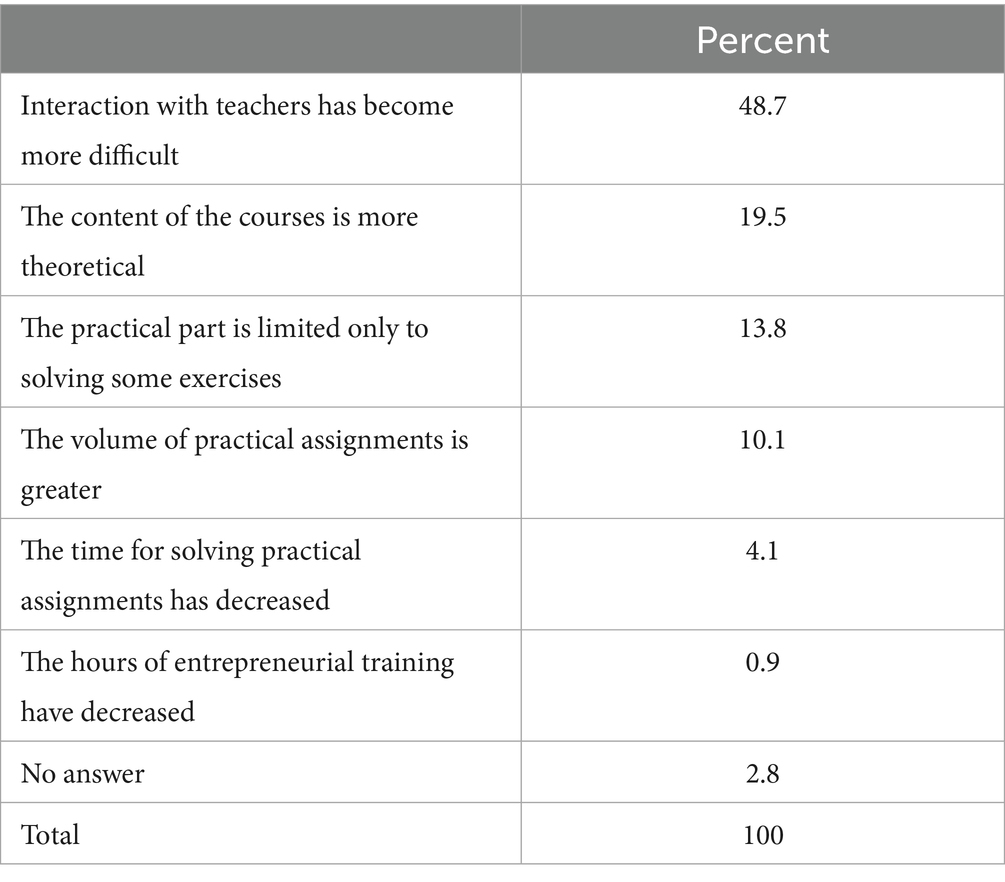
Table 1. Distribuția schimbărilor în activitatea educațională în perioada pandemiei COVID-19, conform răspunsurilor studenților.
Predictably, “interaction with teachers” suffered the most (48.7%), and the teaching activity changed in opposite directions: an increase in theoretical training (19.5%) and a decrease in applied/practical activities (13.8%). At the same time, the volume of practical assignments is greater (10.1%), which suggests that students had to manage on their own for short internships (through the already existing university-private company partnerships). As is known, construction sites were among the only economic activities that continued during the pandemic, but here too, compliance with the rules imposed by the pandemic was very strict. Moreover, international organizations have issued strict regulations that must be respected in the construction field (and similar construction sites) during the pandemic. On the opposite end, practical training internships within faculty premises were virtually suspended. In conclusion, practical internships reverted to being the students’ responsibility, and the time allocated to them increased. However, predictably, the time dedicated to reporting/solving practical problems was reduced. We conclude that the pandemic period brought major changes to students’ university training, and due to the specific nature of this specialization, 100% online education could not be enforced. Under these conditions, we expected students to be relatively confused with the possibility of professional development during the pandemic. When asked about this, the students answered as follows (Figure 1).
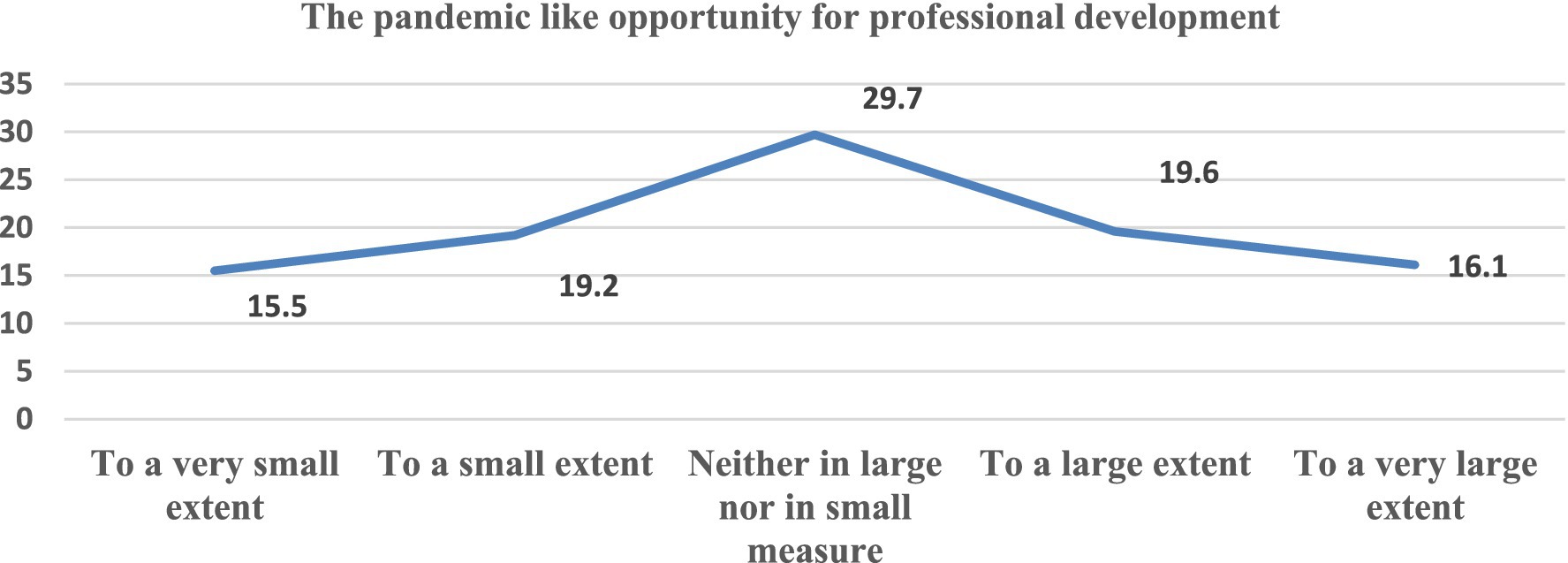
Figure 1. Percentage of students considering professional development opportunities during the pandemic.
If we add up the percentages in the graph above, we will notice that 34.7% of respondents are pessimistic, oscillating between “to a very small extent” and “to a small extent”; 35.7% of respondents were quite satisfied with the opportunity for professional development. In conclusion, the impact on the university preparation of these students was ambivalent: each group considered the pandemic and the opportunities offered according to different logics. At the same time, a compact group of 29.7% is relatively neutral. One of the causes of these undecided statements is related to the direct activity with teachers. Unfortunately, many interpersonal contacts have faded, as can be seen from the students’ responses about the interactions with teachers during the online activities (Figure 2).
Returning to the actual teaching activity, we were interested in the students’ satisfaction with the online training. The answers were as follows (Figure 3).
From the students’ answers, we deduce a reasonable level of adaptation to the new conditions (42.5% are quite or very satisfied) with all the shortcomings specific to the pandemic period. To expand the scope of the research, we asked students if, under the conditions of online learning, they considered themselves to possess the necessary knowledge to design a building, and only 31% of respondents stated that they had such knowledge (see question Q14). To increase the level of interest/involvement of students, they also have suggestions for teachers/trainers. These recommendations can be seen in the following graph (Figures 4, 5).
The main difficulties encountered by students in online activities were the following:
We observe the diversity of difficulties encountered by students in online activities.
4.2 From physical to online activity
After the onset of the pandemic, most university education entities in Romania have found alternative forms of education. The use of online education platforms has become more widespread. In our case, we asked students from our sample in the construction specialization about the first word that comes to mind when they think about the online educational process. The responses are in the Table 2.
We can observe the ambivalence of the responses that oscillate between discomfort and comfort, usefulness and uselessness, comfort and low educational level, etc. For students, the pandemic as such was not a concern in itself because, especially the negative emotional experiences that are here blurred by (fatigue, headaches, panic, sadness, disappointment, demotivation, etc.). These themes can also be found in the next questions from the questionnaire.
4.3 Specific activities before and during the pandemic
We considered that activities both before and after the pandemic had an increased chance of experiencing some disruptions/interruptions. Precisely for this reason, we tried to find out from students to what extent there was continuity in their activities (with the declared support of the university). This situation is visible in the following graph (Figure 6).
From the graph above, we observe certain specific differences. Thus, the university strongly supported student involvement in internship activities before the pandemic (61%), but this support decreased during the pandemic (41%). The responses reflect students’ opinions but can also be linked to the specific context of the pandemic period—a time when public-private partnerships undoubtedly suffered. By contrast, the university’s support for design activities increased significantly (from 25 to 40%) through enhanced digital facilities (e.g., by supporting specialized virtual application platforms). As for student support in project/team management activities, this also increased during the pandemic period.
The role of practical activities proves particularly crucial in this academic field. However, the pandemic period raises two justified questions: to what extent these activities were impacted by the pandemic, and how this lack of activities influenced professional development. We have consolidated the answers in a single graph (Figure 7).
When summarizing the graph percentages, we observe that the pandemic adaptation of practical activities remains high, with 45.3% of respondents considering this adaptation to have occurred to a large or very large extent. Just 23.7% of respondents considered that the adaptations occurred to a very small or small extent (the fact that confirms the continuity of the entire domain even in pandemic conditions)! Surprisingly, just 29.5% of respondents stated that the lack of in-company practical activities affected their professional development to a small or very small degree. While the first results were predictable, the second case suggests that the university’s supplemental measures largely succeeded in compensating for the reduction in practical activities. The list of such compensatory measures is extensive (and aligns with international best practices in the field): replacing traditional internships with virtual simulations using 3D modelling software and construction simulators to recreate worksite experience; supplementing incomplete practical projects with additional theoretical projects; encouraging volunteer programs; implementing VR/AR programs for complex work simulations; utilizing instructional videos and interactive applications.
4.4 Entrepreneurial training
Entrepreneurial education is of great interest to students in the construction specialization. Over 60% of students stated that this type of training is fundamental for their professional development (see Question no. 9) and 38% declared that entrepreneurial training before the pandemic was applied in a very small or small extent (see Q4). Even so, we wanted to detail the possible activities started by universities before the pandemic in order to see the propensity of the educational effort towards entrepreneurial training as a premise of continuity during the pandemic period. How did students appreciate the development of these components we can see the Table 3.
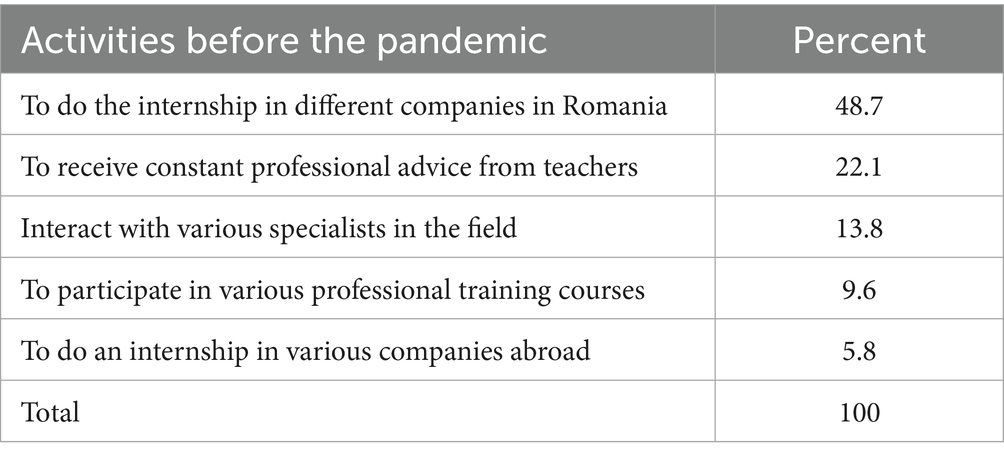
Table 3. Activities carried out before the pandemic for the entrepreneurial preparation of students.
Due to the lack of pandemic-specific constraints, we expected internship-type activities in different companies in Romania to be predominant (48.7% from responses). Such internships can certainly be related to entrepreneurial training even if they did not exactly bear this name. At the same time, we can understand that a series of latent themes of educational and professional development have suddenly become acute during the pandemic period. In any case, the concern for entrepreneurial training is normal considering the profile of such faculties.
This preoccupation is reflected in the fact that most technical universities in Romania also have a volunteer structure generically called the Student Entrepreneurial Society (SAS). For Transylvania University of Brașov, we identified the respective SAS with a series of clear missions (as stated on the university’s website): creating an institutional framework conducive to developing and encouraging an entrepreneurial spirit, supporting students who want to turn a business idea into a startup, organizing mentoring and consulting activities for students, encouraging mentor-student collaboration, aligning education with labour market demands.
For Construction students, the possibility of running a future business is more pronounced compared to other specializations. In this context, our research focused on the educational process itself and assessing the extent to which entrepreneurial training is embraced. Thus, students were asked to evaluate their level of engagement in the entrepreneurial opportunities offered by the university during the COVID-19 pandemic. The results were as follows (Table 4).
We can observe that the university distinguishes itself by supporting online entrepreneurship conferences (mentioned by 49.3% of respondents), followed by participation in mentoring courses organized by faculty members (26.2%). However, the opportunity to engage in online discussions with international field specialists remains challenging to implement (13.3%). The last two activities—“participation in start-up project drafting sessions” and “support for launching one’s own business”—should not be overlooked either and could certainly be expanded in the post-pandemic period. In addition to the institutional offer, students can also propose other activities that increase their entrepreneurial expertise. Here is a list of such actions, subject to student preferences, proposed to their university (Table 5).
In this context, it is important to highlight the contribution of the students’ teachers/trainers regarding their entrepreneurial preparation. The respondents’ answers were as follows (Figure 8).
We can observe a balance in the assessments: 32.8% of respondents report low involvement from teachers, while 28.3% hold the opposite opinion. The remaining 39% consider the teachers’ involvement to be moderate. Once these clarifications are made, we believe that additional theoretical and practical training could be beneficial. When asked whether such supplementary training is useful, students responded as follows (Figure 9).
Overall, we can observe that 51.9% of respondents consider these activities to be useful or very useful! These kinds of activities can certainly influence students’ propensity to start their businesses even during their university studies. When asked about this possibility, respondents gave the following answers (Figure 10).
As can be observed, students are inclined to start a business if their university can support them (53.3%). However, at the same time, only 37% of respondents considered that this initiative can be quite efficient or highly efficient (see question 23). Beyond the tempered enthusiasm of such statements, there are concrete examples in Romania where various faculties can foster entrepreneurial initiatives. Several initiatives are known nationally or internationally, such as: business incubators where students receive free consultancy (e.g., StartUp Hub—Cluj-Napoca, Romania, or StartX—Stanford, USA); integrated modules in study programs; grants for student business ideas; university-business hub partnerships; free consultancy offered by professors; involvement of student associations; hosting dedicated platforms. For construction students, examples include: start-ups in sustainable construction; university-private entrepreneur partnerships for practical courses (e.g., the RIVUS project, visible at https://www.rivus.ro/cursuri-practice-pentru-studentii-utcn for Cluj-Napoca students); workshops for practical applications; thematic fairs (e.g., ConstructFEST, the largest European fair dedicated to the construction market, initiated by the Technical University of Civil Engineering Bucharest); access to free software licenses for students (for complex IT programs); access to entrepreneurial scholarships, etc. For the Faculty of Construction in Brasov, an impressive list of activities with an explicit entrepreneurial reference can only be consulted online. (see on https://constructii.unitbv.ro/ro/stiri-si-evenimente.html).
In all these examples, we observe the contribution of universities/faculties in various training actions. That is why we questioned the students to give suggestions for activities in which their faculties could be more intensively involved for good training. The students’ suggestions were the following (Figure 11).
We asked students to add other suggestions (via an open-ended question) regarding the contribution of universities/faculties to the development of their entrepreneurial component during the pandemic. Beyond the categories in the previous graph, students also added the following (after removing non-responses): entrepreneurship courses/seminars (21%), more practical activities (18%), increasing the quality of courses/seminars (15%), supporting student engagement (15%), the possibility of working with professional companies (6%), meetings with company representatives (8%), qualitative audio/video materials (4%), etc. There were also separate opinions. For example, one student pointed out that other strategies could be invoked, such as: ‘learning how to write start-up projects’ (male, bachelor’s degree cycle, Civil, Industrial, and Agricultural Engineering); “offering free books and video/audio materials related to this field” (male, bachelor’s degree cycle, Civil, Industrial, and Agricultural Engineering), and ‘involvement in personal development that goes far beyond just putting information on paper’ (male, bachelor’s degree cycle, Railways, Roads, and Bridges). Another important remark came from a student who stated, regarding the emphasis on entrepreneurial training: ‘I do not think the university could do it well under the current legislative framework’ (male, master’s cycle, Railways, Roads, and Bridges).”
4.5 Erasmus opportunities
Erasmus mobility programs have been significantly impacted across Europe. However, the opportunity to continue/advance studies abroad remain an important alternative for Romanian students.
When asked whether Erasmus mobility can contribute to students’ professional development, 80% of respondents agreed. Unfortunately, the intention to participate in such programs proved very low, especially during the pandemic, when international travel was heavily restricted. Only 28% of students stated they would accept a mobility opportunity, even under pandemic conditions.
4.5.1 Testing hypothesis
Hypothesis 1 (H1): Satisfaction with online activities was significantly different by student’s gender, residence, and type of study.
This hypothesis was inspired by other social research related to online activities. For example, Gnanadass and Sanders (2018) have identified many gender differences related to distance education, and of course differences in satisfaction to online activities. Additional gender differences were highlighted in a recent OECD (2021) study, which identified various extra stress factors for women compared to men due to educational activities during the pandemic (women more frequently highlighted issues with organization and work-life balance).
To test our hypothesis, we begin with “student’s gender”—independent variable and “satisfaction”—dependent variable, to which we applied the Chi-Square test of independence. We used G*Power software to determine the minimum sample volume. For effect size ω = 0.3, alpha = 0.05, and df = 4, we calculate a minimum sample size of 207 subjects. This minimum size is optimal compared to the entire sample size (318 subjects). The association of the two variables was not statistically significant [χ2(4) = 1.865, p = 0.761]. Thus, we can conclude that there are no differences in satisfaction with online activities between men and women. The hypothesis is not confirmed in this case.
The option to examine potential differences in satisfaction with online activities based on respondents’ residence was also noted in other studies. These studies observed higher satisfaction levels among students living in urban areas compared to their rural counterparts (see for example Hohlfeld et al., 2017; Kohler et al., 2021).
For our research we have “residence” -an independent variable and “satisfaction”—dependent variable. The analysis with G*Power generated the same sample (207 subjects). The association of the two variables was not statistically significant [χ2(4) = 3.559, p = 0.469]. Thus, we can conclude that there are no differences in satisfaction with rural/urban residency. The hypothesis is not confirmed in this case.
Regarding satisfaction differences between bachelor’s and master’s students, research has shown that master’s students’ greater experience makes them more satisfied with online activities (see, e.g., Kahu et al., 2021; Hattie, 2023). The association of the two variables was not statistically significant [χ2(4) = 5.839, p = 0.211]. Thus, we can conclude that there are no differences in satisfaction with online activities between bachelor’s and master’s students. The hypothesis is not confirmed in this case.
To summarize all the cases of our hypothesis, we can say that this was not confirmed: there are no differences in the perception of satisfaction with students’ online activities according to students’ gender, residence or type of study.
Hypothesis 2 (H2): The higher the teachers’ involvement in entrepreneurial education, the stronger the students’ propensity to start their own business.
The rationale for this hypothesis was grounded in existing literature analyzing the relationship between these variables (e.g., Bae et al., 2014; Shahzada et al., 2023). To test it, we operationalized:
• Independent variable: Q13 (Teachers’ approach to entrepreneurial training)
• Dependent variable: Q22 (Interest in starting a business)
We employed Somers’ d to assess the association between these ordinal variables. Prior to analysis, we used G*Power 3.1 to determine the minimum required sample size for ω = 0.3, α = 0.05, and df = 16, which yielded N = 317 (matching our actual sample).
The analysis revealed a statistically significant but weak positive association between teachers’ training approaches and entrepreneurial interest (d = 0.181, p < 0.005). The hypothesis was confirmed.
Hypothesis 3 (H3): The difficulties encountered by students during the pandemic period were significantly different depending on the study program in which they were enrolled.
Numerous prior studies have emphasized differences in pandemic-related experiences across academic specializations. For example, Al-Ansi (2021) studied the role of specialization in students’ anxiety and recruitment during the COVID-19 pandemic, using a sample of 400 students. One of the key conclusions was that specialization had a negative and significant impact on medical and natural science students’ anxiety, and a negative but still significant impact on social science students.
In Romania, Radu et al. (2020) compared students from two specializations—the Faculty of Engineering and the Faculty of Physical Education and Sports at the University of Bacău—to assess differences in the quality of the educational process on online platforms during the COVID-19 pandemic. In our study, we aim to analyze whether the difficulties encountered during the period of online courses varied significantly across students’ academic specializations.
To test our hypothesis, we begin with “student’s specialization” from which we have retained only two better represented specializations (Civil, industrial, and agricultural constructions and Railways, roads, and bridges) as an independent variable and “difficulties during the pandemic”—dependent variable from question 18, to which we applied the Chi-Square test of independence. We used G*Power software to determine the minimum sample volume. For effect size ω = 0.3, alpha = 0.05, and df = 4, we calculate a minimum sample size of 207 subjects. This minimum size is optimal compared to the valid sample in this case (265 subjects). The results are visible in the Table 6.
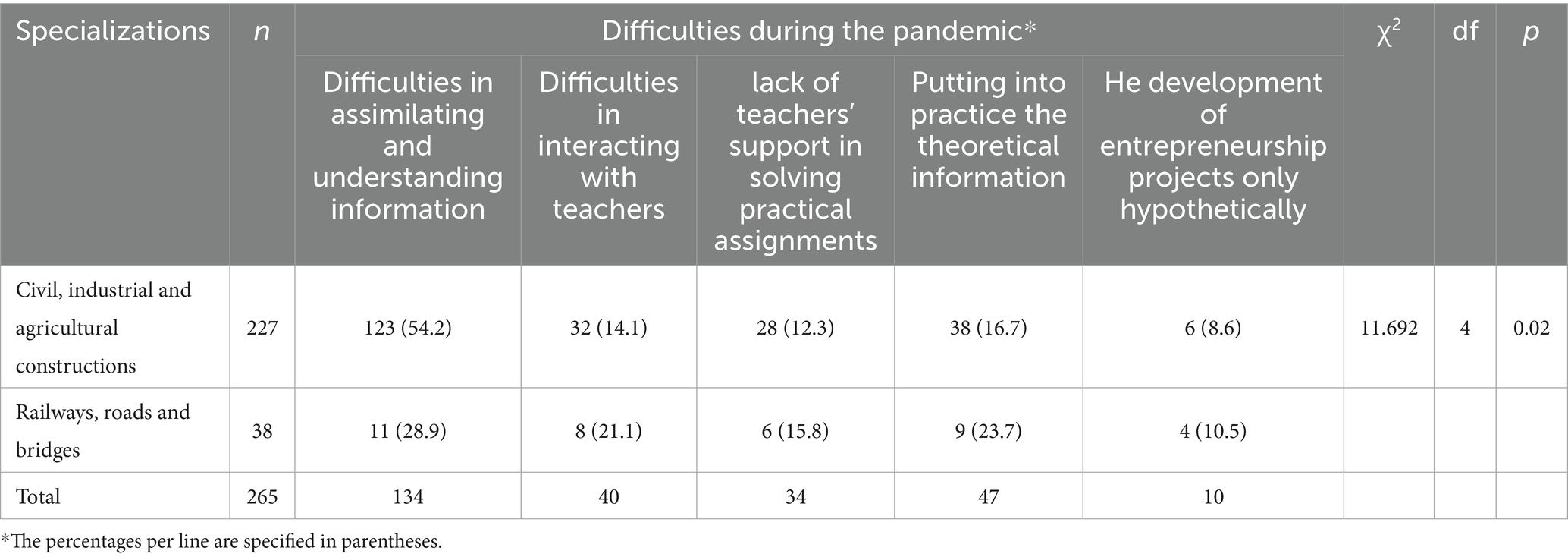
Table 6. Differences perceived by students in the difficulties encountered by specialization during the pandemic period.
The association between the two variables was statistically significant [χ2(4) = 11.692, p = 0.02]. We therefore conclude that perceptions of difficulties in the educational process during the pandemic varied significantly. The hypothesis was confirmed.
This analysis offers practical utility. For instance:
• Information assimilation challenges (The Civil, Industrial, and Agricultural Engineering specialization showed heightened uncertainty regarding lectures, seminars, and practical activities);
• Theory-practice gaps (The Railways, Roads, and Bridges specialization faced notable difficulties in applying theoretical knowledge).
5 Discussion
The results of our study confirm that the sudden shift to online education has generated significant difficulties for students in the construction field. The interaction with the teachers became more difficult, and the content of the courses was mainly oriented towards theory, while the practical components were reduced or limited to simplified exercises. This trend is in full convergence with the observations of other international research. For example, students from technical and vocational backgrounds in the UK reported losses of practical opportunities and reduced contact with industry mentors during the lockdown. Similarly, a study conducted in Malaysia showed a decrease in satisfaction with the quality of online courses, mainly due to decreased interactions and difficulties in training practical skills.
Students in our context also mentioned the increased volume of homework and insufficient time to solve it—a situation reflected globally, where many teachers compensated for the lack of face-to-face activities with additional tasks, increasing the academic burden felt by students (Adnan and Anwar, 2020; Baticulon et al., 2021). Numerous studies confirm that remote emergency learning has been perceived as less effective, especially in countries where access to the internet and equipment has been poor (Adnan and Anwar, 2020; Abbasi et al., 2020). For example, in a technical university in Pakistan, most students considered online courses to be qualitatively inferior to traditional ones, emphasizing their overly theoretical character and lack of adequate practical training (Abbasi et al., 2020). At the same time, research from the Philippines (Baticulon et al., 2021) and India (Mishra et al., 2020) identified similar barriers—unstable connections, difficulty concentrating at home, and insufficient technical support—factors that explain the attenuation of student academic engagement in general.
We therefore note a decrease in academic involvement and student motivation in the online environment, an aspect highlighted by other studies. The lack of direct interaction and the feeling of academic isolation have eroded active participation in classes. Hendrick et al. (2023) shows that academic engagement has suffered due to the loss of common physical space and difficulties in satisfying the need for collegial relationships, with many students feeling alone and disconnected from the university community. Similarly, research from the US highlights a significant decrease in student participation and difficulties in maintaining concentration online—more than three-quarters of US students reporting episodes of distraction and moderate to severe stress during the pandemic (Soria and Chirikov, 2020; Aguilera-Hermida, 2020). The decrease in academic engagement observed in our study (materialized by lower attendance or passive participation in online activities) converges with these global data. However, it is notable that a minority of students in certain contexts also perceived benefits in the new regime—for example, some enjoyed increased flexibility and reduced social obligations, an aspect also mentioned by Hendrick et al. (2023) for a limited segment of students who found isolation as a “respite” from social pressures. This divergent result indicates that the experience was not uniformly negative: the conditions of studying at home favored their own pace of learning for some students. In fact, an experimental study in Spain (Gonzalez et al., 2020) showed that academic performance in assessments was even able to increase during the isolation period, amid the adoption of more autonomous and constant learning strategies by students. The authors explain this phenomenon by the fact that, forced by circumstances, students managed their time more efficiently and studied more consistently throughout the semester, paradoxically leading to better average grades compared to pre-pandemic cohorts (Gonzalez et al., 2020). These findings only partially contradict our results—they suggest that academic engagement suffered overall, but students with high self-discipline were able to turn challenges into opportunities to improve their performance. Overall, however, both our data and most of the sources analyzed converge on the idea that academic engagement was difficult to sustain at normal levels in the absence of the classical learning framework.
The pandemic period had notable psychological implications on students, putting their professional and personal resilience to the test. The results of our questionnaire indicate the predominance of feelings of discomfort, stress and fatigue associated with the online educational process (spontaneously reported by ~37% of students as the first thought related to online school). These experiences are in line with the international literature, which has documented a worrying increase in levels of stress, anxiety, and academic burnout among students throughout the pandemic (Aucejo et al., 2020; Versteeg and Kappe, 2021). In 2021, more than 60% of college students in the U.S. met the criteria for at least one mental health disorder, and about 66% reported increased levels of depression compared to the pre-pandemic period (Soria and Chirikov, 2020). In this context, the concept of resilience has become central: students’ ability to cope with adversity and maintain their emotional balance and academic motivation. Our study reveals that, although students felt the negative psychological effects intensely (e.g., frustration with the loss of direct interactions, anxiety about the uncertainty of the evolution of their studies), many also exhibited coping strategies—for example, asking for additional support from teachers or looking for solutions to make up for the lack of practice. This is supported by Versteeg and Kappe (2021), who showed that personal resilience, together with the support provided by higher education institutions, acted as protective factors against depression and academic stress in the Netherlands, partially mitigating the negative effects of isolation.
Specifically, students with a high level of resilience (e.g., time management skills, self-motivation capacity, social support networks) reported a better mental state and a more effective continuation of studies despite difficulties (Versteeg and Kappe, 2021). These findings underscore the importance of cultivating resilience—professional resilience in this case referring to the power of students to continue their preparation for their future career as a civil engineer, keeping their professional goals on track despite the obstacles encountered.
An aspect that deserves further exploration, complementary to the results of our study, is the impact of psychosocial factors on students’ academic engagement during times of crisis. The study conducted by Bondar et al. (2025) shows that, in severe medical contexts such as ischemic heart disease, gender differences play an important role in the manifestation of depression, and careful evaluation of psychosocial factors is essential for shaping effective interventions. Although our research focused on technical education during the pandemic, relevant parallels can be identified, especially regarding gender differences and the psychological effects experienced by students. Similarly, in higher education, stress, anxiety, and social isolation have influenced how students approached their professional development, affecting both their motivation and their perception of personal resilience. Therefore, we argue that integrating the psychosocial dimension into post-crisis educational policies is essential, particularly through psychological screening initiatives, differentiated emotional support, and gender-sensitive approaches.
According to the literature, students used various coping mechanisms: some adjusted their expectations and career plans to adapt to new economic realities (Deepthi and Exley, 2023), others sought alternative learning opportunities (additional online courses, personal projects) to compensate for practical gaps. The fact that some of our students have made concrete requests to the university for the improvement of online teaching activities (e.g., more frequent feedback, mentoring sessions, practical remedial classes) highlights both the psychological impact of the situation (the need for support and structure) and the potential for resilience—by expressing these needs, students become active actors in adjusting the educational environment to the crisis. We can therefore say that, although the pandemic has induced a mental health crisis among many students, it has also revealed their ability to adapt and grow post-traumaticly, marking important individual differences in the way they navigate difficulties (Aucejo et al., 2020; Baticulon et al., 2021).
One of the aspects most affected by the pandemic, also highlighted in our study (Goal O6), was international academic mobility. Only 28% of the surveyed students said they were willing to take advantage of a mobility opportunity (Erasmus type) in the conditions of the pandemic, most citing uncertainties and risks. This low percentage reflects the general trend observed globally: travel restrictions and health uncertainty have strongly discouraged academic travel. A study of more than 2,700 students in mainland China and Hong Kong showed that 84% were no longer interested in studying abroad after the COVID-19 crisis, indicating an unprecedented collapse in the appetite for international mobility (Mok et al., 2021). In fact, it is estimated that the pandemic has drastically reduced the flows of international students to traditional destination countries, with Western universities reporting substantial decreases in enrollment from abroad (Mok et al., 2021). For students in the construction field, the loss of access to mobility programs and international internships has also meant a decrease in exposure to global practices and diverse professional networks. Before the pandemic, 61% of our students benefited (directly or indirectly) from the university’s support for placements in companies (internships)—a proportion that decreased to 41% during the pandemic, according to respondents’ perceptions. This decrease correlates with the general difficulties of the labour market and public-private partnerships in the period under review. Other research confirms that the pandemic has severely disrupted internship and apprenticeship programs: in England, for example, massive disruptions to apprenticeships and postponement of employment plans for technical high school graduates have been reported, with many young people opting to extend their studies due to a lack of immediate employment opportunities (Deepthi and Exley, 2023). Thus, the decrease in mobility—both international academic and domestic on the labor market—had a direct impact on students’ practical professional development. The convergence with other studies is clear: the pandemic has reduced students’ ability to gain real practical experience (through physical laboratories, site visits, internships at construction companies), implicitly affecting their confidence in their practical training. However, there are also positive signals: for example, in the universities analyzed by Deepthi and Exley (2023), students demonstrated adaptability by adjusting aspirations—some chose to pursue local master’s programs or specialization courses instead of external mobility options, others temporarily oriented their careers towards related fields less affected by the crisis. This behavior indicates a form of professional resilience at the group level—students find alternative routes to continue their development, even when traditional paths (such as international experiences) are blocked.
An original contribution of our research lies in the analysis of how the practical, technical and entrepreneurial education components have been adapted (or affected) in the pandemic context. In the field of construction, practical training—laboratories, design projects, field work—is essential. The data obtained indicate that the university has managed to some extent to adapt the design and team management activities to the online environment (for example, by using specialized digital platforms for simulating technical projects), something noted by the students by the increase in participation in such activities during the pandemic (40% compared to 25% before, according to their opinions). This result aligns with the trend of pedagogical innovation forced by the pandemic: numerous initiatives to implement virtual laboratories and interactive simulation platforms have been reported internationally, aimed at compensating for the lack of access to physical equipment (Li and Liang, 2024). A recent meta-analysis (Li and Liang, 2024) demonstrates that virtual labs can significantly increase the motivation and engagement in learning of engineering students, constituting a valuable tool to maintain their interest and actively involve them even remotely. However, the same authors emphasize that the virtual cannot fully replace hands-on practical experience, recommending the conscious integration of virtual experiments with physical ones once conditions allow.
Our results confirm this need for balance: students acutely felt the lack of real practical applications, with 13.8% explicitly indicating “limiting the practical part” as a major change in education, and numerous qualitative comments expressing distrust in practical skills acquired exclusively online. Regarding the entrepreneurial component, our study reveals an interesting paradox. On the one hand, more than 60% of students recognized the fundamental importance of entrepreneurial training for their professional development (an idea also supported by the literature, which sees entrepreneurial skills as a strategic asset for future engineers—cf. Ratten and Jones, 2021). On the other hand, in the students’ perception, the hours dedicated to entrepreneurship decreased during the pandemic, with the university focusing primarily on basic technical subjects. This aspect reflects a divergence from students’ expectations and signals an area that requires increased attention. Ratten and Jones et al. (2021) argue that the pandemic should be seen as an opportunity to rethink entrepreneurship education, promoting innovative methods—for example, virtual business incubators, startup simulations or online consulting projects—to maintain the applied and experiential character of this discipline even in virtual environments. Such solutions could have been more integrated into construction programs; However, the constraints of the period limited the initiatives in the analyzed faculty, as indicated by the students’ perception. However, it is worth mentioning that the existence of a Student Entrepreneurial Society in the university (an initiative mentioned in our report) provided a formal framework through which students interested in entrepreneurship could access resources (webinars, online mentoring) even during the pandemic—an example of good practice that could be extended. Convergent with literature (Ratten and Jones, 2021; Secundo et al., 2021), our results suggest that forced digitization has catalyzed certain positive transformations (increasing students’ digital skills, familiarization with online collaborative work tools also used in industry), but also highlighted the areas where the curriculum needs to be adapted to achieve its objectives (especially the practical component and training of transversal skills, such as entrepreneurial ones).
Overall, our findings align with internationally reported trends on the impact of the pandemic on technical higher education, reinforcing the external validity of the study. Notable convergences occur in the area of difficulties: almost all studies reveal similar challenges—poor student-teacher interaction, low participation, mental fatigue, poor access to laboratory practice—suggesting a universal nature of these problems (Adnan and Anwar, 2020; Deepthi and Exley, 2023; Hendrick et al., 2023). Also, the negative psychological effects and the decrease in mobility appear as global constants, with the pandemic generating a globally synchronized educational shock (Mok et al., 2021; Aucejo et al., 2020). However, our study also brings elements of originality and nuance. First, the focus on construction students and the entrepreneurial dimension makes a new contribution: the literature so far has focused mainly on either the general student population or segments such as medicine (Baticulon et al., 2021; Abbasi et al., 2020) or educational sciences, with few detailed investigations into construction engineering specializations. Secondly, our study captured both quantitative and qualitative perspectives of students, allowing a more complex understanding of their feelings and suggestions—for example, the recommendations made by students for teachers (such as emphasis on virtual practical applications, more interactive communication, flexibility in assessment) provide valuable input that few other studies have documented directly from students. Compared to the literature, we also identified some divergences: unlike studies that reported an increase in dropout or dropout in a pandemic context (where students lost interest completely), in our sample the perceived dropout rate was not significant—most students continued their courses, showing frustration rather than total disengagement. This can be explained by the specifics of the construction field, where students are often motivated by the prospect of a stable career in engineering, which made them try to “resist” the difficult period with the end goal in mind. Another distinctive observation concerns online assessment: while in many contexts students challenged the fairness and effectiveness of online examination, the Malaysian study (Yong et al., 2022) paradoxically found a positive appreciation of online assessments for their ability to test critical thinking. In our case, the students did not explicitly mention this aspect, probably being more concerned about the lack of practice; However, this is a direction worth exploring (if online assessments have influenced their perception of learning).
From the present analysis, some essential recommendations emerge. On a practical level, technical education institutions should develop hybrid teaching strategies and academic continuity plans that mitigate the loss of practical applications in crisis situations. For example, universities can invest in developing virtual labs and simulators for engineering disciplines so that practical skills can also be practiced online (Li and Liang, 2024). At the same time, partnerships with the private sector can be extended to the digital area—for example, the organization of virtual internships or remote projects with construction companies, thus keeping students connected to industry practice even when physical presence is not possible. Another recommendation concerns the psychological and motivational support of students: universities should implement academic counseling and coaching programs to increase student resilience, facilitate collegial interaction (through online communities, virtual study groups), and develop mechanisms for early identification of students at risk of dropout or burnout (Versteeg and Kappe, 2021). In addition, it is necessary to adapt the entrepreneurial curriculum—teachers can introduce innovative methodologies (social entrepreneurship projects related to the pandemic context, virtual business plan competitions, etc.) to keep the practical and collaborative component of entrepreneurial education alive (Ratten and Jones, 2021). At a theoretical level, our study contributes to the literature by highlighting how a global crisis can amplify existing vulnerabilities in the education system (e.g., insufficiently digitized practical training) and generate new research directions. A first theoretical contribution is to emphasize the interdependence between academic involvement, psychological well-being and institutional support in times of disruption—a model that is worth investigating in future longitudinal studies in order to understand how these variables influence each other and how universities can intervene effectively.
Our results also challenge the concept of educational resilience: what makes some students thrive (e.g., improve their performance or find alternative solutions) while others stagnate or regress? The answer to this question has theoretical implications in the development of personalized support models and in the integration of Self-Determination theory (which links the satisfaction of relational needs, competence and autonomy to engagement—cf. Hendrick et al., 2023) in the design of educational programs. Last but not least, the study also raises the issue of equity in education: students from rural areas or with limited material resources were probably more severely affected by the online transition. Post-pandemic literature insists on accentuating inequalities (Aucejo et al., 2020), which theoretically suggests the need to include the educational justice perspective in any future analysis of university resilience to crises. In conclusion, the present research not only provides a critical x-ray of the impact of the pandemic on construction students, but also provides a set of lessons learned. The convergence found with other studies reinforces the validity of the observations, and the divergences and particularities highlighted underline the original contribution made: that of integrating multiple dimensions—from practical and entrepreneurial training to the emotional state and future plans of students—in a coherent discussion about the resilience of technical education in a context of global crisis. In the long term, the implementation of the recommendations derived from this can lead to strengthening the preparation of institutions for future disruptions and to the development of a more resilient, inclusive and student-oriented academic environment, ensuring the continuity of the training of competent specialists even in difficult times.
6 Limitations
Despite the significant contributions of this study, there are several limitations that need to be considered. A first aspect is the fact that the research was carried out on a small sample of students from Romania, which makes the results specific to this educational and cultural context. Thus, generalizing the conclusions to other countries or regions, with different education systems, could be problematic, especially given that access to technology and educational resources varies significantly between different countries.
Another significant limitation of the study is that the data was collected in a relatively short period of time, immediately after the start of the pandemic and the rapid transition to online education. This means that the long-term impact of the pandemic on technical education and student vocational training has not been fully captured. The long-term impact on students’ skills and careers, as well as their evolution in the labour market, would require longitudinal research to better understand the lingering effects.
In addition, the study was based on respondents’ self-reporting, which inevitably introduces some subjective bias. Although students provided valuable information about their experiences with online education and the difficulties they encountered, their perceptions may have been influenced by emotional or circumstantial factors, such as pandemic-related stress or lack of adequate resources for learning. Thus, there is a risk that some answers do not fully reflect the objective reality of the situation.
Finally, the study did not include a comparison between students from different regions of the country or between higher education institutions with varied educational resources and policies. In a diversified national educational context, students from less advantaged backgrounds or from universities with limited resources may have experienced much greater challenges. A comparative approach would have provided a more comprehensive perspective on the unequal impact of the pandemic and could have highlighted the specific needs of different groups of students.
7 Conclusion
The present study highlighted the significant impact of the COVID-19 pandemic on technical education in the field of construction, highlighting both the challenges faced by students and the adaptations needed to cope with this global crisis. Specifically, the results of the research showed a decrease in academic engagement and student satisfaction with online education, mainly due to the loss of practical experience and direct interaction with teachers. These findings are in line with the global trends observed in the literature, but also bring original contributions through the specific approach of the field of construction, a technical sector with particular requirements in terms of practical training.
Another important aspect identified in the study is the professional resilience of the students, who, despite the difficulties encountered, continued to pursue their studies and look for alternative solutions to improve their professional skills. This suggests a notable ability of the younger generations to adapt, even in the face of challenging educational conditions. However, an urgent need for psychological and pedagogical support was also highlighted, with students expressing a great interest in mentoring sessions and additional feedback from teachers. Thus, universities should invest more in the emotional and academic support of students, to support their adaptation to online education in the long term.
Our study also revealed a significant decrease in international mobility, an essential factor in the development of professional skills of students in the field of construction. Academic mobility has been heavily affected by travel restrictions, and many students have not had access to international internships, thus limiting their opportunities for experiential learning. In this context, we recommend that universities explore more virtual mobility options and encourage international online collaborations to make up for this loss. These measures could help enrich the educational experience of construction students, even in the face of global crises.
In conclusion, the COVID-19 pandemic has had a significant impact on technical and vocational education, and our study provides clear evidence of how education systems can respond to the challenges posed by such crises. However, it is essential for educational institutions to rethink their pedagogical approaches, improve the integration of technologies in education and support the development of students’ transversal competences, such as professional resilience and adaptability in the face of change. Only by investing in continuous teacher training, improving digital infrastructure and creating a holistic support framework for students can technical education become more resilient and better prepared for future challenges.
Data availability statement
The raw data supporting the conclusions of this article will be made available by the authors, without undue reservation.
Ethics statement
The studies involving humans were approved by Faculty Council of the Faculty of Sociology and Communication, Transilvania University of Brașov—Decision no. 12, dated February 16, 2023. The studies were conducted in accordance with the local legislation and institutional requirements. The participants provided their written informed consent to participate in this study. Written informed consent was obtained from the individual(s) for the publication of any potentially identifiable images or data included in this article.
Author contributions
DC: Writing – review & editing, Writing – original draft. CC: Writing – review & editing, Writing – original draft. CV: Writing – original draft, Writing – review & editing. AN: Writing – original draft, Writing – review & editing. MB: Writing – review & editing, Writing – original draft. OT: Writing – original draft, Writing – review & editing. CP: Writing – review & editing, Writing – original draft. MA: Writing – original draft, Writing – review & editing. RS: Writing – review & editing, Writing – original draft. EP: Writing – review & editing, Writing – original draft. AM: Writing – review & editing, Writing – original draft.
Funding
The author(s) declare that no financial support was received for the research and/or publication of this article.
Conflict of interest
The authors declare that the research was conducted in the absence of any commercial or financial relationships that could be construed as a potential conflict of interest.
Generative AI statement
The author(s) declare that no Gen AI was used in the creation of this manuscript.
Publisher’s note
All claims expressed in this article are solely those of the authors and do not necessarily represent those of their affiliated organizations, or those of the publisher, the editors and the reviewers. Any product that may be evaluated in this article, or claim that may be made by its manufacturer, is not guaranteed or endorsed by the publisher.
References
Abbasi, S., Ayoob, T., Malik, A., and Memon, S. (2020). Perceptions of students regarding e-learning during COVID-19 at a private medical college. Pakistan J. Med. Sci. 36, S57–S61. doi: 10.12669/pjms.36.COVID19-S4.2766
Adedoyin, O. B., and Soykan, E. (2020). The impact of COVID-19 on education: a review of the literature. Educ. Res. Rev. 15, 899–904. doi: 10.1080/10494820.2020.1813180
Adnan, M., and Anwar, K. (2020). Online learning amid the COVID-19 pandemic: students’ perspectives. J. Pedag. Soc. Psychol. 1, 45–51. doi: 10.33902/JPSP.2020261309
Aguilera-Hermida, A. P. (2020). College students’ use and acceptance of emergency online learning due to COVID-19. Int. J. Educ. Res. Open 1:100011. doi: 10.1016/j.ijedro.2020.100011
Al-Ansi, A. M. (2021). Psychologists’ perspective of mental health in Yemen during the civil war and COVID 19: A qualitative inquiry. Current Psychology, 40, 5821–5832. doi: 10.1007/s12144-021-02195-z
Aristovnik, A., Keržič, D., and Umek, L. (2020). Impact of the COVID-19 pandemic on student performance and academic achievement: evidence from a European university. J. Educ. Res. 113, 285–295.
Alexa, L., Pîslaru, M., Avasilcăi, S., Lucescu, L., Bujor, A., and Avram, E. (2022). Exploring Romanian engineering students’ perceptions of COVID-19 emergency e-learning: a case study at TUIasi. Electron. J. E-Learn. 20, 19–34.
Alianța Națională a Organizațiilor Studențești din România – ANOSR. (2020). Soluțiile studenților pentru un sistem de învățământ superior rezilient în fața pandemiei COVID-19. București.
Aucejo, E. M., French, J., Araya, M. P. U., and Zafar, B. (2020). The impact of COVID-19 on student experiences and expectations: evidence from a survey. J. Public Econ. 191:104271. doi: 10.1016/j.jpubeco.2020.104271
Bae, T. J., Qian, S., Miao, C., and Fiet, J. O. (2014). The relationship between entrepreneurship education and entrepreneurial intentions: A meta–analytic review. Entrepreneurship Theory and Practice, 38, 217–254. doi: 10.1111/etap.12095
Baticulon, R. E., Sy, J. J., Alberto, N. R. I., Baron, M. B. C., Mabulay, R. E. C., Rizada, L. G. T., et al. (2021). Barriers to online learning in the time of COVID-19: a national survey of medical students in the Philippines. Med. Sci. Educ. 31, 615–626. doi: 10.1007/s40670-021-01231-z
Bolliger, D. U., and Halupa, C. (2018). Student perceptions of satisfaction and anxiety in an online doctoral program. Distance Educ. 39, 318–335.
Bondar, L. I., Iovanovici, D. C., Măduța, V., Butari, D. B., Șandor, F. M., Mariș, M. A., et al. (2025). Screening depression in ischemic heart disease: gender differences and psychosocial implications using a self-developed questionnaire. J. Clin. Med. 14:837. doi: 10.3390/jcm14030837
Butnaru, G. I., Niță, V., Anichiti, A., and Brînză, G. (2021). The effectiveness of online education during COVID-19 pandemic: a comparative analysis between the perceptions of academic staff and students. Sustainability 13:4793. doi: 10.3390/su13094793
Deepthi, D., and Exley, S. (2023). Exploring students’ experiences of technical and vocational learning in university technical colleges during the pandemic. Br. Educ. Res. J. 49, 575–592. doi: 10.1002/berj.3857
Ghannad, N., and Sørensson, T. (2024). The shift to digital education in entrepreneurship: a comparative study of pre- and post-pandemic experiences. J. Entrepreneursh. Educ. 27, 215–232.
Gonzalez, T., de la Rubia, M. A., Hincz, K. P., Comas-Lopez, M., Subirats, L., Fort, S., et al. (2020). Influence of COVID-19 confinement on students’ performance in higher education. PLoS One 15:e0239490. doi: 10.1371/journal.pone.0239490
Grodotzki, C., Schmidt, H., and Schröder, J. (2021). How virtual laboratories affect engineering students’ learning: results from a COVID-19 educational experiment. Eur. J. Eng. Educ. 46, 901–911.
Gnanadass, E., and Sanders, A. Y. (2018). Gender still matters in distance education. Handbook of distance education, M. G. Moore and W. C. Diehl, Routledge. 79–91.
Gutierrez, K. S., Kokka, K., and Gutiérrez, R. A. (2023). Reimagining STEM education in a pandemic: Youth-led online teaching and learning. Journal of Research in Science Teaching, 60, 27–54. doi: 10.1002/tea.21790
Hendrick, L., Opdenakker, M.-C., and Van der Vaart, W. (2023). Students’ academic engagement during COVID-19 times: a mixed-methods study into relatedness and loneliness during the pandemic. Front. Psychol. 14:1221003. doi: 10.3389/fpsyg.2023.1221003
Hohlfeld, T. N., Ritzhaupt, A. D., Dawson, K., and Wilson, M. L. (2017). An examination of seven years of technology integration in Florida schools: Through the lens of the Levels of Digital Divide in Schools. Computers and Education, 113, 135–161. doi: 10.1016/j.compedu.2017.05.017
Jones, K., Dawson, M., and East, J. (2021). Lessons learned from teaching design thinking online. J. Eng. Educ. Innov. 14, 35–54.
Kahu, E. R., Nelson, K., and Picton, C. (2021). Pathways to engagement: Conceptualising student engagement in the educational interface. Higher Education Research and Development, 40, 1–15. doi: 10.1080/07294360.2020.1834036
Kohler, T., Bartz, C., and Krcmar, H. (2021). Digital studying in times of COVID 19: Teacher- and student-related aspects promoting satisfaction with digital learning. International Journal of Educational Technology in Higher Education, 18, doi: 10.1186/s41239-021-00279-9
Laachach, A., Laaraj, N., and Farissi, N. (2023). The effects of the COVID-19 pandemic on tourism entrepreneurial intention among university students: the role of entrepreneurship education. Ind. High. Educ. 35, 630–637.
Li, J., and Liang, W. (2024). Effectiveness of virtual laboratory in engineering education: a meta-analysis. PLoS One 19:e0316269. doi: 10.1371/journal.pone.0316269
Liguori, E. W., and Winkler, C. (2020). From COVID-19 crisis to the reinvention of entrepreneurship education: a framework for adaptive learning. J. Bus. Res. 118, 434–445.
Lup, A., and Mitrea, M. (2021). Evaluating the impact of online learning on Romanian students during the COVID-19 pandemic. J. Romanian High. Educ. Stud. 9, 53–68.
Marinoni, G., Van’t Land, H., and Jensen, T. (2020). The impact of COVID-19 on higher education around the world: IAU global survey report. International Association of Universities.
Marquez-Ramos, L. (2021). Does digitalization in higher education help to bridge the gap between academia and industry? An application to COVID-19. Ind. High. Educ. 35, 630–637. doi: 10.1177/0950422221989190
Mathew, M., Frondelius, A., and Törnroos, R. (2022). Impact of COVID 19 pandemic on engineering education. ASEE Southeast Section Conference Proceedings, 2022. Available at: https://sites.asee.org/se/wp-content/uploads/sites/56/2022/03/2022ASEESE88.pdf
Mishra, L., Gupta, T., and Shree, A. (2020). Online teaching-learning in higher education during lockdown: challenges and opportunities. Int. J. Educ. Res. Open 1:100012. doi: 10.1016/j.ijedro.2020.100012
Mok, K. H., Xiong, W., Ke, G., and Cheung, J. O. W. (2021). Impact of COVID-19 pandemic on international higher education and student mobility: student perspectives from mainland China and Hong Kong. Int. J. Educ. Res. 105:101718. doi: 10.1016/j.ijer.2020.101718
OECD (2021). The state of higher education: One year into the COVID-19 pandemic. Paris, France OECD Publishing.
Radu, L., Andrieș, A. M., and Moldovan, O. (2020). Implicațiile pandemiei COVID 19 asupra auditului financiar din România. Postmodern Openings, 11, 20–34. doi: 10.18662/po/11.3/200
Ratten, V. (2020). Coronavirus (COVID-19) and entrepreneurship education: a new normal for teaching and learning. Educ. Train. 62, 729–741.
Ratten, V., and Jones, P. (2021). COVID-19 and entrepreneurship education: implications for advancing research and practice. Int. J. Manag. Educ. 19:100432. doi: 10.1016/j.ijme.2020.100432
Secundo, G., Mele, G., Vecchio, P. D., Dezi, L., and Del Giudice, M. (2021). Teaching entrepreneurship in higher education: a systematic review and research agenda. Technol. Forecast. Soc. Change 173:121077. doi: 10.1016/j.techfore.2021.121077
Shahzada, K., Khan, I., and Zahoor, S. (2023). The necessity of others: Entrepreneurial self-efficacy, TMT collective efficacy, and entrepreneurial orientation. Frontiers in Psychology, 14, doi: 10.3389/fpsyg.2023.1095978
Shoulder, D., Jenkins, D., and Wall, J. (2022). Exploring teaching and learning experiences during COVID 19 in engineering education. Sustainability, 14, Article 7501. doi: 10.3390/su14127501
Skupchenko, D. (2021). The role of entrepreneurial education in mitigating the effects of COVID-19: a global perspective. Int. J. Entrepreneur. Educ. 19, 112–125.
Soria, K. M., and Chirikov, I. (2020). Investigating the disproportionate impact of COVID-19 on first-generation and low-income college students. Sociol. Sci. 10:154. doi: 10.3390/socsci10040154
Versteeg, M., and Kappe, R. (2021). Resilience and higher education support as protective factors for student academic stress and depression during COVID-19 in the Netherlands. Front. Public Health 9:737223. doi: 10.3389/fpubh.2021.737223
Keywords: pandemic, university education, construction, entrepreneurship, online education
Citation: Chasciar DR, Coman C, Vasile C, Netedu A, Bularca MC, Toderici OF, Plescan C, Anton M, Shields R, Plescan E and Mardache A (2025) The impact of the COVID-19 pandemic on university education in the field of construction: adaptations and challenges in the entrepreneurial training of students. Front. Educ. 10:1623392. doi: 10.3389/feduc.2025.1623392
Edited by:
Rolando Salazar Hernandez, Universidad Autónoma de Tamaulipas, MexicoReviewed by:
Fernando Barragán-Medero, University of La Laguna, SpainRuth Montes Martínez, Universidad de Salamanca, Spain
Copyright © 2025 Chasciar, Coman, Vasile, Netedu, Bularca, Toderici, Plescan, Anton, Shields, Plescan and Mardache. This is an open-access article distributed under the terms of the Creative Commons Attribution License (CC BY). The use, distribution or reproduction in other forums is permitted, provided the original author(s) and the copyright owner(s) are credited and that the original publication in this journal is cited, in accordance with accepted academic practice. No use, distribution or reproduction is permitted which does not comply with these terms.
*Correspondence: Denisa Ramona Chasciar, ZGVuaXNhcmFtb25hY2hhc2NpYXJAeWFob28uY29t
 Denisa Ramona Chasciar
Denisa Ramona Chasciar Claudiu Coman
Claudiu Coman Chasciar Vasile
Chasciar Vasile Adrian Netedu
Adrian Netedu Maria Cristina Bularca
Maria Cristina Bularca Ovidiu Florin Toderici6
Ovidiu Florin Toderici6 Andreea Mardache
Andreea Mardache